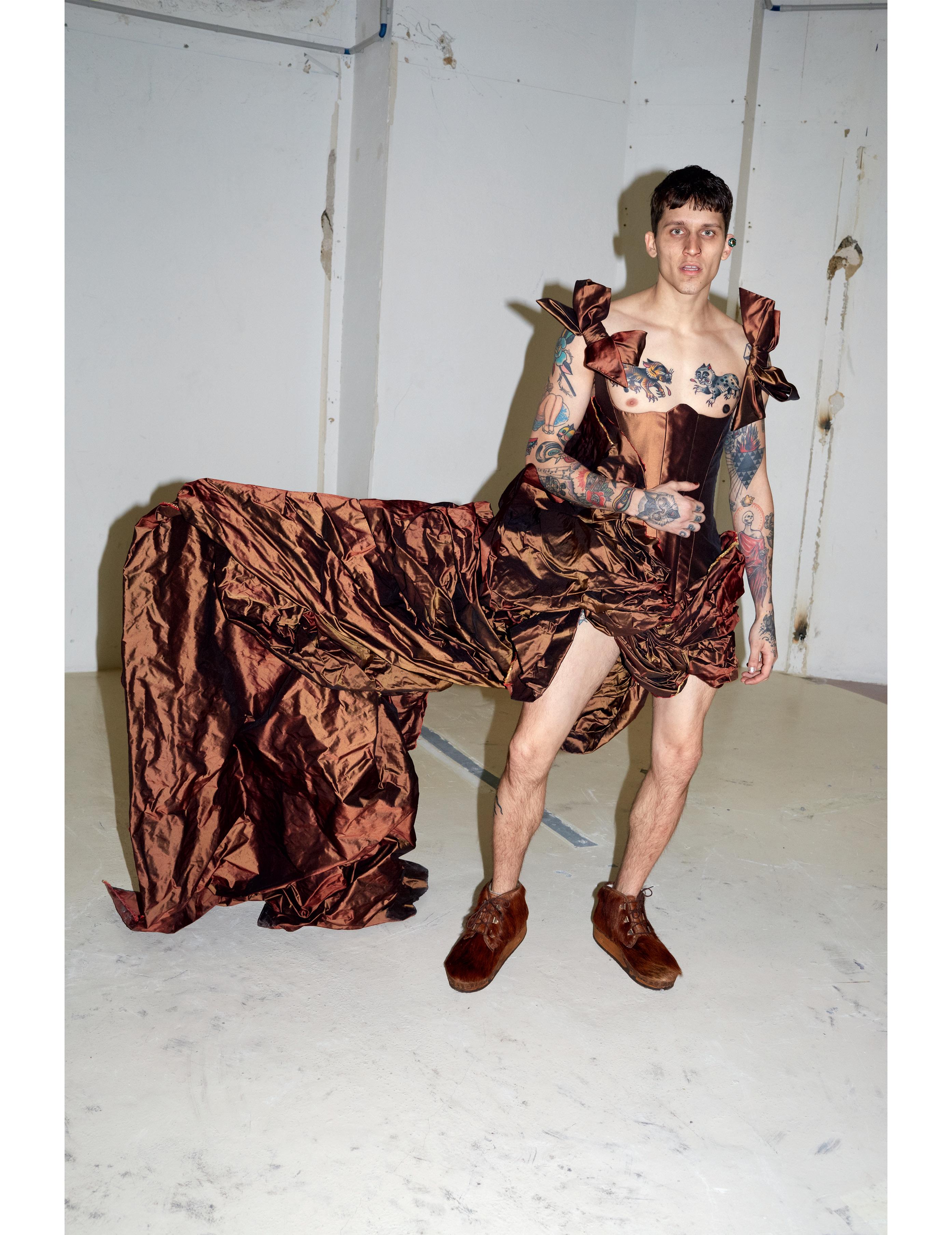








Our theme for this, our launch issue, is entitled Change and Transition. As one of our guest interviewees, Ms. Honey Dijon, boldly states: “we are all transitioning, every fucking day”, but it was some specific transitions that we had in mind when we put the magazine together.
Our urban centres are changing, London alone has lost almost all of its legendary countercultural East London venues (The George & Dragon, The Joiners, The Nelson’s Head) in the last year, and it is against this backdrop of a city going through such rapid transformation that we wanted to profile some real life characters and position our editorials.
The spirit of the bright young things who have taken over our cover is at the heart of this launch issue of STREETS, and we wanted them and our contributors to tell their own stories about living, loving and working in London and other global cities where work was commissioned.
Each contributor has interpreted the theme of change and transition from their own unique perspective, choosing to focus on such tangential themes as friendship, bravery, sexual exploration, gentrification and gender ambiguity. Inspiration also came from some of our favourite decades along the way.
Thanks to those of you who have offered us a warm welcome, and for your support on this journey.
Dan Blake, Editor-in-Chief

www.streetsmagazine.com
Editor-In-Chief
Dan Blake
Art Director - Graphic Design
Christopher Agius Burke
Fashion Features Editor
Colin Chapman
Fashion Editor
Kristofj Von Strass
Fashion Features Writer
Cristian Burbano
Fashion Coordinator
Neela Gnanendran
Social Media Coordinator
Ellen Joyce
Fashion Assistants
Yuliya Oleksenko, Sasha Hilton, Christos Christou
Founders & Publishers
Dan Blake & Wendy Elsmore
Contributors
Alex Babsky, Cameron McNee, Christopher Preston, Conor Clinch, Damien Fry, Daniel Dyer, David Steven Wilson, Dayaruci, Ferry Van Der Nat, Florian Renner, Grant Thomas, Harry James Irving, Jody Taylor, Jon Gorrigan, Jordy Huinder, Josephine Platt, Lowe H Seger, Maria Comparetto, Paula Damberga, PC Williams, Sascha Heintze, Sean Alexander Geraghty, Steph Wilson, Sune Czajkowski, Thomas Falmer, Yasmina Machancoses.
Sreets Magazine Ltd.
92 Richmond Road, Dalston, Hackney E8 3HW
London
To request a full media kit, please contact: advertising@streetsmagazine.com
Follow us: @streets_magazine

REPORTING: CRISTIAN
BURBANO
EDITED BY: COLIN CHAPMAN
Patti Smith is a one-off, a true maverick. As an artistic voice she has stayed relevant over 5 decades and in October she will be performing the album that started it all at London’s Roundhouse; Horses, originally released in 1975. I suspect many of you will have discovered Patti through her memoir Just Kids; the story of her friendship with artist Robert Mapplethorpe (since commissioned as a TV series), or perhaps through appearances at Glastonbury and Field Day this year, but in a sense her image is omnipresent. The Mapplethorpe-shot cover of Horses features Patti in a simple white shirt and blazer, a slim black tie draped loosely around her neck, her self-cut hair modeled on a teenage Arthur Rimbaud; the ultimate downtown androgyne. Without this image it would be hard to imagine the careers of Chloe Sevigny, Kim Gordon, David Sims or Hedi Slimane taking quite the shape they have. Of course, the October events are completely sold out but STREETS recommends you move heaven and earth (or at least hustle a ticket) to be there.
Patti Smith and her band perform Horses at The Roundhouse, 30th and 31st October 2015.
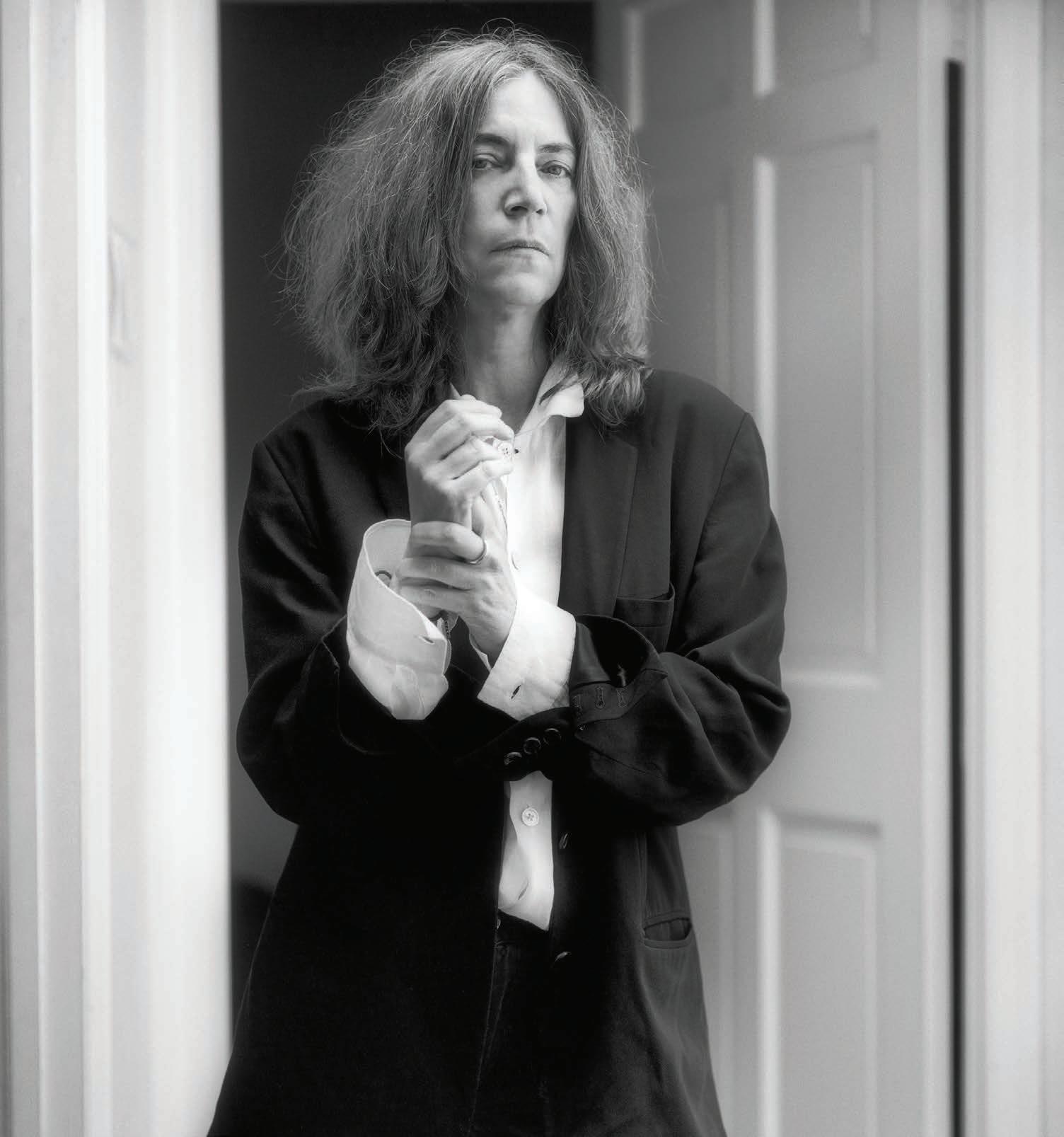

Not content with duties at his own namesake menswear label and as Creative Director at legendary couture house Christian Dior, Raf Simons continues his partnership with Fred Perry with a new collection for AW15.
Pieces for the new collaboration fuse the subcultural undertones of Fred Perry with Simons’ own bold sensibility by taking inspiration from modern art, both in colour and patterns. Multi-coloured diagonal darting and panelling adorns classic Fred Perry shirts and a printed tee. Simons also experiments with low necklines on a knitted tank and with contrast hems on a V-neck sweater. The quilted bomber jacket is a particular standout in black with classic MA1 bold orange lining and comes complete with a collectable Raf Simons removable key ring. The new capsule collection marks Simons’ 12th collaboration with the brand, dating back to 2008 Shop the collection at all Fred Perry Laurel Wreath shops and online at www.fredperry.com.

16 – 19 OCTOBER
October sees the return of one of the most respected art fairs in the world to our own Regent’s Park: Frieze London. More than 170 galleries from around the world will attend, showing work from about 1,000 different artists across the contemporary art spectrum. In addition to the carefully selected artistic programme, Frieze will also present Frieze Projects (which will include film work by sometime Michael Clark collaborator Charles Atlas) and Frieze Talks, the fair’s programme of artist commissions and panel discussions from leading voices in contemporary art. See what’s going down in contemporary art around the world without leaving town, and enjoy some unparalleled people watching while you’re at it.
Frieze London, Regent’s Park, Chester Rd, London NW1 4NR, United Kingdom


One of the most beautiful galleries in Europe, The Guggenheim Museum Bilbao is presenting Alex Katz - This Is Now, a show that explores the development of landscape in the artist’s career over the last 25 years.
Organized by The High Museum of Art, Atlanta, in collaboration with the Guggenheim Museum Bilbao, the exhibition features 35 works in which Katz sought to convey the appearance of things as they are both felt and perceived in the “present tense,” the now. Born in Brooklyn in the late ‘20s Katz is a painter whose work is part of the canon of postwar American art but remains part of the Avant-garde today. Emerging as a figurative painter in the ‘50s, he rejected Abstract Expressionism’s abandonment of imagery but did embrace the movement’s energy, quite literally, developing a fast physically active painting style inspired by the action painting of Jackson Pollock. If you enjoy Hockney’s vivid approach to depicting nature, or the dense surfaces of Gary Hume’s work this show should be one for your Autumn agenda.


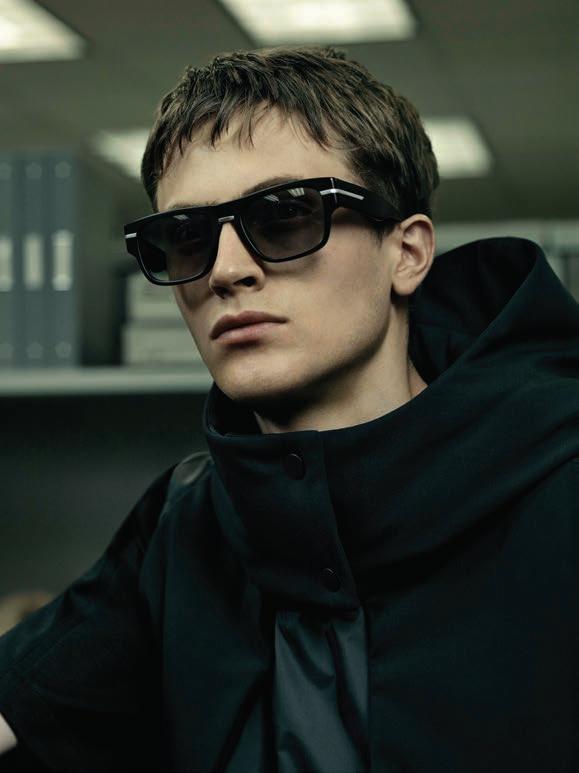
Dao-Yi Chow and Maxwell Osborne, the designers behind the New York brand Public School have had quite an impressive 12 months, winning virtually every major menswear prize going from the CFDA Menswear Designer of the Year Award to the 2014 International Woolmark Prize. The duo’s high end take on street wear has captivated the critics and public alike and now the fashionable winners have announced not one but two new high profile collaborations for the season.
First up is a collection with luxury travel and accessories brand, TUMI. The 6 piece line brings together TUMI’s renowned craftsmanship with Public School’s cool: luggage, bags and accessories that mirror the brand›s runway looks in stripped down black and grey tones. Our favourite of the offerings is the tote, made from a leather and suede two-tone mix.
Prices start at £145 for the travel kit to £950 for the suitcase and are available from uk.tumi.com
Also out, is a partnership with luxury eyewear brand, Oliver Peoples. Together, the two brands have created a new unisex design that takes inspiration from the brand’s classic Wyler frame, (the frames worn personally by Osborne himself). The acetate frames are bold and slightly oversized, merging a sporty aesthetic with a more high fashion edge and complimenting Public School’s ‘90s club scene inspired AW15 mainline collection. The Oliver Peoples x Public School frames come in three colourways, with two black and one grey styles.
Priced at £328 the sunglasses will be available at oliverpeoples.com and at selected boutiques. These two collaborations, their own line and the recent announcement that the two will be the new Creative Directors at DKNY is sure to make Chow and Osborne’s coming year every bit as exciting and busy as the last.



photography: EDWARD COOKE
styling: CRISTIAN BURBANO
British label AllSaints has dropped its first full-scale line of women’s handbags, making it the brand’s biggest non-apparel launch of the season. The 48-piece collection references the brand’s iconic biker jacket and interprets it in a contemporary manner with styles including tote, satchel, hobo, clutch, cross-body, bowling, mini and shoulder bag.
AllSaints’ minimal aesthetic continues with these new designs, though accented with zips, chains and studs these are concealed by leather; embossed logos appear in hidden places. Colours compliment the chic and classic designs coming in black or in rich autumnal shades of burgundy, brown and navy. Wil Beedle, AllSaints’ Creative Director comments: “Launching a full-range of women’s bags has provided us with the perfect opportunity to take our love and expertise of leather into a highly elevated and feminine arena. The collection’s myriad textures, techniques and details exude real craftsmanship and refinement while maintaining the brand’s spirit and attitude.” Prices start at £98 - £328 and available at www.allsaints.com.
mua & grooming: TABITHA ELLIS, models: GABRIEL LINDSAY @AMCK, JUUL BRAAKSMA AT ESTABLISHED
Acne Studios has released a unisex capsule collection of small leather goods for AW15, perfectly evoking the minimally elegant style which has made the Swedish label so revered. 11 new styles of wallet, key holders, pouches and device holders comprise the new line, all with a cool, curved-edged design and coming in a variety of colour options including burgundy, orange and monochrome. Matt and patent versions are available either lined in lamb’s leather or in a contrasting colour. The collection offers a chic and modern way to carry around your documents, credit cards and favourite gadgets, while the leather pouches are ideal to keep your device safe and scratch free.
Altogether, a perfect excuse for an accessories makeover this season. Prices range from £70£350 and the range is available from acnestudios. com with a customisation service on offer at selected Acne Studios stores


Calvin Klein Jeans has embraced the #allblackeverything trend by releasing its Infinite Black Collection. The new line of menswear, womenswear and accessories embraces the noir palette with emphasis on black denim with different textures and materials including satin bombers and leather dungarees. Perhaps following the example of Italo Zucchelli, henchman of Calvin Klein Collection Menswear’s experimental approach to fabrics, the Jeans line features innovative details using new hidden gel technology for embossed seaming with all denim items rinsed in a stay-black wash so there’s no risk of turning grey.
Prices start at £45-£445 and the line is available to shop at www.calvinklein.com
To celebrate the 30th anniversary of the late stylist Ray Petri’s ‘Buffalo Style’, Dr. Martens has worked with legendary photographer Jamie Morgan and stylist Barry Kamen to create their AW15 Spirit of Buffalo imagery.
‘Buffalo Style’ was an attitude, a way of life that emerged from London’s post punk melting pot of cultures, tribes and individuals; the outsiders in Thatcher’s Britain. Jamie and Ray were pioneers of the fashion industry, renowned for their infamous cover of The Face Magazine in 1985 which featured a 13 year old boy named Felix, wearing a hat with ‘KILLER’ pinned to it, thereby creating a style revolution with the iconic image and Buffalo style is still hugely celebrated today.
Photographs feature menswear and womenswear and use only AW15 Dr. Martens footwear along with non DM clothing for an authentic recreation of the original ‘Buffalo Style’ movement. Alongside the imagery, Jamie Morgan has produced a short film with singer Neneh Cherry (who had a hit single with ‘Buffalo Stance’ in 1988). www.drmartens.com









“Illusions are to the soul what atmosphere is to the earth.”



HAIR: KAZUKO KITAOKA MAKE-UP: KHELA@CALLMYAGENT
PHOTOGRAPHY ASSISTANT: CELIA MARJOLET
STYLIST ASSISTANT: ANA STING MODEL: MILA GANAME @NEXT MANAGEMENT
WORDS: JOSEPHINE PLATT
The designer of Hardware LDN talks to STREETS about her experimental years, the digital generation and fashioning a name for herself in LA
Punks, metalheads and skaters. These are among the eclectic subcultures Jessica Horwell, founder and designer of Hardware LDN, cites as inspirations for her grunge-infused London-based street-wear label. Boasting a celebrity clientele since its inception in 2012, Hardware LDN has been sported by the likes of Wu Tang Clan, Cara Delevingne and Jourdan Dunn. Rita Ora’s entire crew of dancers was also styled head to toe in a statement monochrome collection, designed especially for UK festivals this summer. “I guess all brands grow over time,” the 26-year-old said. “Things are definitely taking shape.”
As the designer gets to work on her biggest collection to date for AW16 – while also collaborating on numerous underwraps accessory projects – Hardware LDN is becoming ever more ubiquitous, and a heavyweight to watch in contemporary design. Not only has the young talent now branched out from her home turf to take on LA, but we can expect to catch her presenting, (and helping co-produce) the UK based channel for VFILES in NYC – “presenting is something I have always wanted to do so it’s super exciting,” she enthused. In the midst of her busy schedule, we caught up with the 90s fanatic to reminisce on teenage nostalgia, chat about finding new energy and her thoughts on the digital generation.
You’re a London girl, you’ve grown up surrounded by the subcultures the city boasts and your bold designs are rife with reference the city’s diverse styles. How do you remember London as a teenager and which subcultures stand out?
I was totally obsessed with the whole grunge look when I was growing up – Nirvana hoodies and boys skating around school. I used to wear flared trousers, which dragged under my shoes, and when it rained they would get wet up to my knees. I remember this style in particular, but I went through lots of extreme phases, like when the Spice Girls where around I was totally inspired. I had my white plastic wedges that Baby Spice wore “my pride and joy, ‘till my dog ate them… GUTTED!!” Cities’ subcultures are always changing and merging, it’s always been happening and now the reinvention of previous styles is constant. However, I’m still totally stuck in the 90’s.
How do you think the spirit of London differs today?
Summarise the mood of the youth in 2015.
I think social media has changed things hugely, what’s going
on in the cities is so accessible: who is performing, who is in town, who is wearing what. I think social media has made cities more alive as everyone knows what’s going on and to be involved. I think it’s also inspiring for younger people to have access people doing things they love. All the youth today are consuming day-to-day things so much faster; I think it’s inspiring for them. They have endless opportunity from their own bedroom; I think it’s amazing. I hope that when younger people look at my Insta or my brand they become inspired to follow their passions.
I read that in the past you’ve had ‘London’ shouted at you when you’ve been out overseas, how would you describe London style?
I think you can tell a London girl/boy when you see one.
Hardware LDN is about a style of living, tell me what it means to wear Hardware.
Hardware LDN caters for the young and free, people who want to express their creative side through the clothes they wear.
Tell me how the brand is taking off in LA?
I think it’s really important for your brand to be known in all the leading fashion cities, and it’s always exciting to have a new hustling ground especially somewhere like LA. I also find it inspiring keeping things moving – like going to LA gives you a new energy. I also do my manufacturing there, so its nice to get away and focus solidly on making the collection: when I’m in London I have all the other runnings of the brand distracting me.



previous page:
this page:





LEVI’S VINTAGE FROM MR PORTER

MAKE-UP: VICTORIA TODD USING MAC
HAIR: JODY TAYLOR @ PREMIER USING BUMBLE & BUMBLE
MODELS: LEWIS CONLON @ SELECT
JACK BARTON @ ESTABLISHED
KHALID @ ELITE
THEO GEORGE @ SELECT
LEWIS BRYANT @ SUPA
RAFFAELE @ SELECT
PHOTO ASSISTANT: ANDRAS BARTOK
With bags of charm and looks to match, Nico Mirallegro is one of those enviable figures - a talented actor but also a genuinely good guy. The twenty-four-yearold has had quite an impressive CV, from playing an emo kid on British teen soap Hollyoaks to critical acclaim (and a BAFTA nomination to boot) on recent shows including The Village for the BBC and My Mad Fat Diary for E4. We caught up with Nico for our exclusive shoot in Hackney, London to discuss his success to date and his move to American Network TV with Virtuoso, from HBO, the network responsible for hits including Six Feet Under, The Wire, True Blood and American Detective.
PHOTOGRAPHY: LEIGH KEILY
Hi Nico, to start things off just wanted to get a bit of a backstory on how you got into acting?
My sister Claudia got me into acting in 2007. She dragged me along to an improvisation class - now called Manchester School of Acting - and a very, very nervous actor was born.
For the last 3 years people have seen you in My Mad Fat Diary, tell me a bit how that role came about and did you imagine it would become the success it has? Being both critically acclaimed and loved by audiences of all ages despite handling as serious a matter as mental health?
I’d just finished Spike Island, a film set in the 1990s which was cast by a Casting Director called Jane Ripley. Jane was then looking for actors for a new E4 show My Mad Fat Diary. She brought me in to read; obviously having known me already, and the rest is history! I don’t think
you ever go into something expecting to make a ‘hit’ TV show. Yes, everyone wants it to do well and to be loved but I think you just want to tell the person’s (Rae Earl) story as truthfully as possible, so the audience can get a sense of every emotion the characters go through.
Music played a bit part on the show, what were you listening to a Finn’s age/what were you like and have your tastes changed now you’re 24?
When I was Finn’s age - 16/17 - I was massively into rap music. From 2Pac, Biggie, Nas, Mos Def, Eminem and then a real love for REM... I think it’s because my mum had it blasting out from a very young age. Finn wins on the music front I think, in terms of being really indie and edgy, ha!
Would you be open to a reunion episode/ special down the road? As I’m sure many would be interested to see how Rae and Finn are getting on 5/10 years down the line, what do you think the characters would be doing? Yeah, maybe if the gang go travelling together to Thailand or India, or even a cheeky weekend in Ibiza. There’s a story in there definitely!
Last year you were nominated for BAFTA for your role on another high profile series, The Village, set in World War I for the BBC, what was that experience like?
It was a pretty surreal experience for my mother and I. I’m just glad that The Village was recognised in multiple categories, showing the impact it had on people. Real stories, real people’s lives, a hundred years ago. Peter Moffat, its writer, is incredibly talented at what he does.
You’ve just filmed the pilot for Alan Ball’s (Writer of American Beauty, True Blood and Six

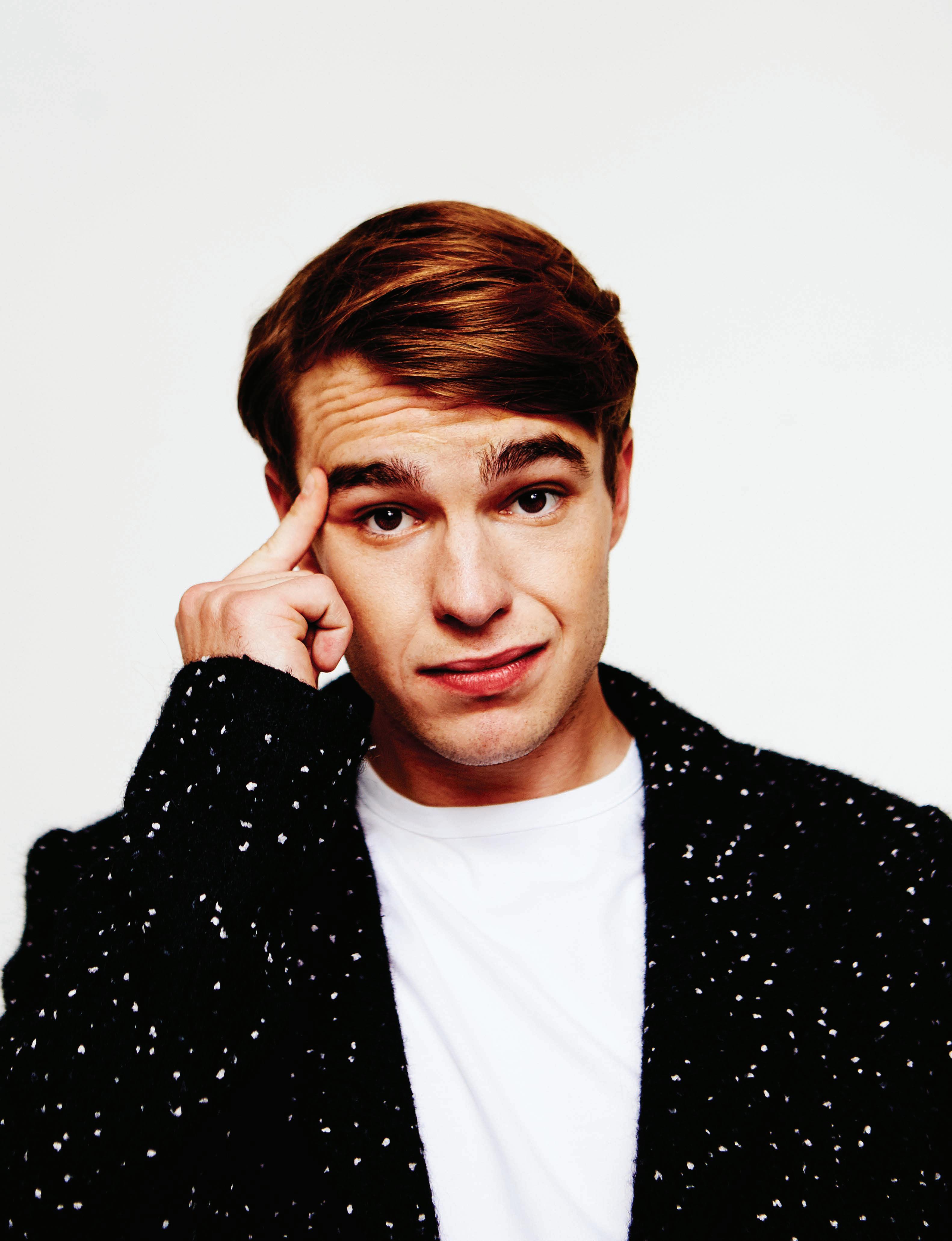
about musical prodigies set in 18th century Vienna. Can you tell us much about that? What was it like working on a project by such an acclaimed and well-known writer?
Virtuoso was an incredible experience. We spent a month in Hungary learning our desired instruments; mine being the very difficult violin! We had a ball! Alan and Peter (Macdissi, Ball’s partner) are truly wonderful professionals and never let the energy drop. To be cast and directed by Alan Ball AND to call him a friend is pretty amazing. He’s straight to the point, which I love.
Acting-wise what projects are you working on next? Any particular directors/actors you’d like to work with? Any preference for doing TV/film/theatre?
There isn’t really a preference as to what happens next. I don’t like to rush things. Let’s just see how it goes. I just want to keep learning and bettering myself. Trying to understand and make sense of everything around us one step at a time. I admire Danny Boyle as a human being and as a director. I count down the days till I meet him and we can go into excessive detail about the mighty Manchester United.
Outside of work what do you like to get up to? What do you spend any free time you have doing?
I spend a lot of time in Manchester. Mainly running, or with the dog, or running with the dog... I like to run and be active outdoors, I think we need it to keep our bodies ticking. I love being around family and friends, this brings me the most warmth.
So, as we are a fashion magazine... Which brands/looks are you into? What’s your ‘go to’ shop to get kitted out at?
My go to shop… Err, I’m not a big shopper/ consumer unless it’s for a big occasion. I’ve always been into my old school Adidas wear from the ‘90s. I can never get enough of that. It’s probably all you see me in unless someone’s styling me!
Lastly, anything our readers would be surprised to know about you?
Something people don’t know about me... I used to race go-karts in Spain, so I’m not too shabby around a track.
The full 3 series of My Mad Fat Diary is available to view on 4OD.
Release dates for Virtuoso are yet to be announced by HBO.












“Oh that’s a favourite question!” chuckles Princess Julia over a cup of tea at an establishment on Shoreditch High Street, “that’s a question that people often like to ask me.” My opening enquiry had been to ask how the zeitgeist of contemporary London compares to some of the much-analysed cultural highlights of her long career as style icon, DJ, actress, muse, journalist, musician and artist (amongst other culturally defining roles). This line of questioning may not have won me any points for originality, but it’s what genuinely came to mind when I decided to interview Julia for our change and transitionthemed launch issue. I was keen to find out how this woman with a serious talent for being in the right place at the right time, assesses today’s diverse, digitally-propelled scene against such key moments in cultural history as the early days of punk (“it only lasted a couple of years”, she points out), through the peacock, Bowie-worshipping Blitz Club days that she is most commonly associated with, and on and on through ‘90s dance music, drag hedonism and beyond.


So how do you find today’s scene?
“I tend to not make too many comparisons, she says, “because the way I see things its sort of a continuum, there’s a sort of thread running through everything. If I do have to compare things, I’m most likely to say that everything’s quite similar in a way, the people that are exploring and challenging themselves in various creative disciplines still have that same energy, as the mid ‘70s or the ‘80s, there’s an ongoing conversation.
‘The only difference is that the things that people might have referenced in the past, now I find, I’m the reference, or my generation are, we’re the reference points for the younger generation.
“After 10 years I realised this was happening, after 20 years I’ve settled into it, and now after 30 years it’s a career!
“There are people around that document these occasions and might have been there at the time of some of these movements but were not part of the movement. But the thing that makes me different is that I’m very much part of these things that are going on, I’m always involved in projects rather than being a voyeur, I have the insider knowledge, I’m coming from the core of it.”
Have you never wanted to disappear?
“No!” she responds heartily. When I point out the singularity of this among her peers, she explains:
“There are people who don’t ever go away, but sort of disassociate themselves from a certain time of their lives. Reinvent themselves… they don’t want to be seen as living in the past.
“I don’t ever be one of those people who says, ‘that was the moment and there’ll never be anything like it’, and yes, there probably will never be anything like it in terms of the New Romantic era, but things have to progress and move on. But there are integral elements and an aesthetic that really travels, and that’s why its such an amazing legacy.
“You can look at some of those pictures of that era, and the looks that we were creating could easily have been from any decade. You can see traces from the punk era, the glam rock era, everything goes round and round, that’s how things move on and become new again, they get translated to a new vibe. We were taking elements of bygone eras and giving it our own twist.”
C.C How do you keep track of it? Is there a warehouse full of memorabilia somewhere, waiting for a chance to be curated for the sake of cultural nostalgia?
Apparently not: “I’m rubbish at any kind of archiving”, Julia admits, “I’ve moved so many times.”
“I have managed to lug around London some bits of paper; flyers from bygone eras that I see as being culturally relevant, otherwise I’m not that precious about physical things, but I do realise their importance.”
It’s clear that Julia doesn’t like to live in the past. No sooner is a cultural moment bubbling into fruition than Julia is already wearing it, being at the centre of it, and probably inspiring it in the first place. By way of example, for our shoot Julia is wearing, amongst other designers, Ed Marler, East London’s maverick prince of rediscovered opulence and the more-is-more fashion statement, and of course she looks suitably regal, as though it was designed with her in mind.
At the time I met Julia she had just finished a run in Tennessee Williams Suddenly Last Summer and is full of obvious affection and enthusiasm for her co-stars, East London drag legends Jon Sizzle and Jonny Woo. “It was really interesting seeing Jonny Woo do entire monologues, it’s quite a dark play, and he played the role of Mrs Venables. Tennessee William’s dialogue can be quite tricky. Jon Sizzle was quite sensational as well. When you’re doing a drag performance it’s very spontaneous, very off the wall but this was very structured.” “They utilized the space really well, it was basically in the basement of The Glory, which is a disco”.
How was your experience of acting?
“I really got into it, it was a delightful challenge!” she says. “I live for those kind of challenges.
“I’ve had cameo roles in things, but I worked out that I come from the film side of things, not so much live theatre performance, although I have appeared in numerous things on stage… I really come from the film end of things; my illustrious career as a video extra!
“Obviously I’ve worked with John Maybury and in various pop videos in the ‘80s and then my debut… Fade to Grey! I’m used to working with filmmakers and photographers, in that kind of environment, live theatre isn’t really my comfort zone.
At this point I loop back to my original line of questioning about her assessment of what’s happening right now: as venues of subcultural importance are disappearing from the capital for example, are we entering an era where all major cities will be the same; propagating a gentrified form of “hipsterdom” diluted for maximum acceptance?
“There’s always been this fantastic conversation between London and New York. There’s always been parallels, even in the ‘70s. The difference was, New York was the city that never slept, that was open 24 hours; it seemed more hectic and had more of a danger element. There were groups of people in New York that would come to London and vice versa. It wasn’t the case that there were just islands of cities with a few freaks in them.
“Even though it was harder to get in touch with people, to communicate, in the olden days, in the ‘70s, things did happen by word of mouth and scraps



of paper, but in actual fact things did travel outside of London, and there would be a group of people who would be looking towards the Blitz say, who had visited and had started up their own night.
“With the gentrification of New York there’s even more parallels with London going on now.
“And now everyone can communicate so much more, I think it’s wonderful, I love social networks!”
Doesn’t the Internet just promote copying, everything becomes the same because its possible to see what people are doing all over the world instantly?
“Well you’ve got to start somewhere! I wouldn’t say copying I’d say inspired. When I was 16 there was an older lot, and I would ask them questions.
“I think we live in a time when the different ages, the different generations can meld together and be quite comfortable with one another.
“When I was eight I was already self aware, I already had an idea of how I wanted to look. I gleaned most things from TV: pop music, old movies.
“Most people of my ilk would say the same thing: the arrival of Ziggy Stardust was the start of something; witnessing this kind of androgyny landing on the stage of Top of the Tops.
“I saw people at Bowie gigs later on and I’d think, ‘who are they over there?
People who I later made friends with; a year later I’d meet them in a club.
We were they bastard children of Ziggy Stardust! And obviously there were people like the most amazing shop girl ever, the incredible Jordan and Siouxsie Sioux. I’m a little bit younger than them, but they are the girls I saw trolloping around being totally daring, by the mid ‘70s most people looked dull as dishwater but there were these little pockets of resistance. Speaking of daring, further to having just completed her almost-debut in the Tennessee Williams play, Princess Julia tells me she’s currently making plans for a one-woman show in the autumn. Combining monologue, drag, video and Q&A with a guest interviewee (Julia’s little black book is, unsurprisingly, brimful of the most amazing creative icons).
What does she aim to achieve with it? I wonder.
“Part of the reason I’m doing this is to pull all the threads together, to inspire people to imagine a timeline, a continuum of a creative lifestyle that doesn’t really change.
“I’m doing this as a response to that question you asked at the beginning.
“After the play, I felt quite inspired, that I could do something where I do ramble but I can introduce other elements.
“There will be a lot of creative humour because even at the Blitz, there was a huge element of humour.
“But also its going to be dark, because I’m aware of social aspects like AIDS, from the mid-80s there was a period when my friends were dropping like flies and it was a very sad moment,” she emphasises, “I want to bring it to people’s awareness, but it’s more of a celebration.”
Julia has always taken a singular path it seems: “when I was about 10, when I was at school they used to train you to be a housewife… I can’t imagine anything more hideous!
“I used to ask the teacher what the alternative was, ‘if you don’t happen to find your perfect soul mate what then?’ It was really archaic… maybe I’ve always been a bit forward-looking.”
What is truly remarkable about Julia is that not only did she live through those times of nascent change and cultural redirection but she is still relevant; young designers are thrilled to dress her, people want to hear her experiences of being at the core of foregone cultural moments at firsthand but she is also indisputably hotwired to the present and to living in the moment.
“Maybe I’ve got some kind of weird thirst, she ponders, “something that makes me feel excited all the time, sort of looking forwards really. Maybe I’m some sort of visionary!
Maybe I’ve got some kind of weird thirst, she ponders, “something that makes me feel excited all the time, sort of looking forwards really. Maybe I’m some sort of visionary! “ “


SEAN ALEXANDER GERAGHTY











HAIR STYLIST: BRADY LEA @ STELLA CREATIVE ARTISTS MAKE UP ARTIST: JADE BIRD @ FRANK AGENCY MODELS:
ALASTAIR GEORGE @NEXT BEN SMITH @PREMIER JAMES HOLDERNESS @SUPA
PHOTOGRAHY ASSISTANTS: PETER DRONE & ALESSANDRO RAIMONDO DIGITAL : GUILLAUME B.
RETOUCH : STUDIO INVISIBLE STYLIST ASSISTANT: MARTA YARZA
SPECIAL THANKS : ARTMEDIA CAPTURE, PROLIGHTING, ABNEY CEMETERY















ART DIRECTOR: DAN BLAKE







“I WANTED TO DO A STORY WITH A FOCUS ON THE PEOPLE AND NOT JUST THE FASHION, USING A MIX OF FASHION MODELS AND NON-MODELS FROM DIFFERENT AGE GROUPS AND A MIX OF GENDERS, SAYS PHOTOGRAPHER LOWE SEGER OF OUR COVER STORY AND FEATURE, “I CHOSE TO FOCUS ON THE IMPORTANCE OF BEING AN INDIVIDUAL AS MUCH AS HOW IMPORTANT FRIENDSHIP IS IN OUR DAILY LIVES, IN A PLACE WHICH CAN BE VERY LONELY AS WELL AS VERY CROWDED.”
THAT PLACE IS LONDON, AND THE PACE OF CHANGE HERE IS A COMMON THREAD RUNNING THOUGH OUR LAUNCH ISSUE, “AS ITS STANDS NOW, BIG COMPANIES ARE GETTING BIGGER AND MORE POWERFUL AND WE HAVE LESS AND LESS CHOICES IN OUR OWN FUTURE,” HE CONTINUES.
OF OUR COVER STARS, LOWE HAD THIS TO SAY: “SOME OF US AREN’T SATISFIED WITH THE LIMITATIONS OF STEREOTYPES, WE AREN’T ALL BUILT TO FIT IN TO THIS TYPICAL LIFESTYLE AND THANKFULLY THERE ARE SOME ABSOLUTELY AMAZING PEOPLE OUT THERE WHO MAKE OTHERS TURN THEIR HEADS.”
AS INSPIRING AS OUR OWN CAST OF SUPERSTARS MIGHT BE, THERE WERE ROLE MODELS:
“WE USED JOE DALLESANDRO AS OUR INSPIRATIONAL ROLE MODEL AS HE IS FOR SOME PEOPLE (BOTH MEN AND WOMEN) THE BIGGEST SEX ICON WHO EVER WALKED ON THIS EARTH. WE HAVE STAYED VERY CLOSE TO REFERENCES FROM MOVIES LIKE TRASH, DALLAS BUYERS CLUB, AND TOMBOY ETC. WHILE FOCUSING ON THE MESSAGE AS A WHOLE STORY.
OTHER REFERENCES WE HAVE USED FOR THIS STORY ARE JANE FORTH, JARED LETO, ANDY WARHOL, THE VELVET UNDERGROUND, FRIENDSHIP, YOUTH, SEXUALITY AND GENDER AMBIGUITY.”
HAVING JUST SUMMED UP THINGS UP FOR US SO NEATLY, DOES LOWE HAVE ANYTHING TO ADD? HIS REPLY IS TYPICALLY UNCONVENTIONAL: “ARE THERE ANY REAL COWBOYS ANYMORE? DOES ANYONE EVEN REMEMBER WHAT IT MEANS TO BE A REAL COWBOY?
WITH THESE AND OTHER THOUGHTS IN MIND, EDITOR-IN-CHIEF DAN BLAKE CAUGHT UP WITH SOME OF OUR SUPERSTARS TO FIND OUT WHAT BEING A BRIGHT YOUNG THING IN LONDON TODAY ENTAILS. IN KEEPING WITH OUR WARHOLIAN, OF THE MOMENT APPROACH, THE CONVERSATIONS ALL TOOK PLACE OVER SOCIAL MEDIA.
FULL NAME: Kevin Bayes
PROFESSION: performer and model
FROM: Liverpool
LIVES: Honor Oak, South East London
DB: Describe your habits. Do you have any?
KB: Like bad habits?
DB: Any habits, good or bad. STREETS wants to know
KB: Erm,.. I bite my nails? And I have a twitch so I make loud noises a lot
DB: Lol! Good habits?
KB: I don’t really know how to answer this question you’d be better asking my boyfriend. Erm, I’m friendly. I sing a lot?
DB: What music are you listening to right now?
KB: Erm, my music taste is quite cheesy
DB: That’s OK
KB: …Like unbelievably so
DB: Aww, go on…
KB: Currently Emma Bunton maybe
DB: Brill
KB: The Tamperer Feel It. Just think like bad disco, that’s me.
DB: Any special places in London where you like to hang out?
KB: Deptford is my favourite place in London it’s got such a great spirit to it, and the market there is amazing.
DB: What’s your favourite decade if you had to pick?
KB: Definitely the 80s
DB: Seeing as you like the 80’s. Dynasty or Dallas?
KB: Dynasty, hands down I really want to do a short film reenacting the catfights actually.
DB: Sounds amazing. We’ll look out for that. Would you star in it?
KB: Obviously
DB: Alexis?
KB: Without a shadow, hands down
DB: Any guilty pleasures?
KB: Coronation Street
DB: Your biggest mistake?
KB: No regrets ever!
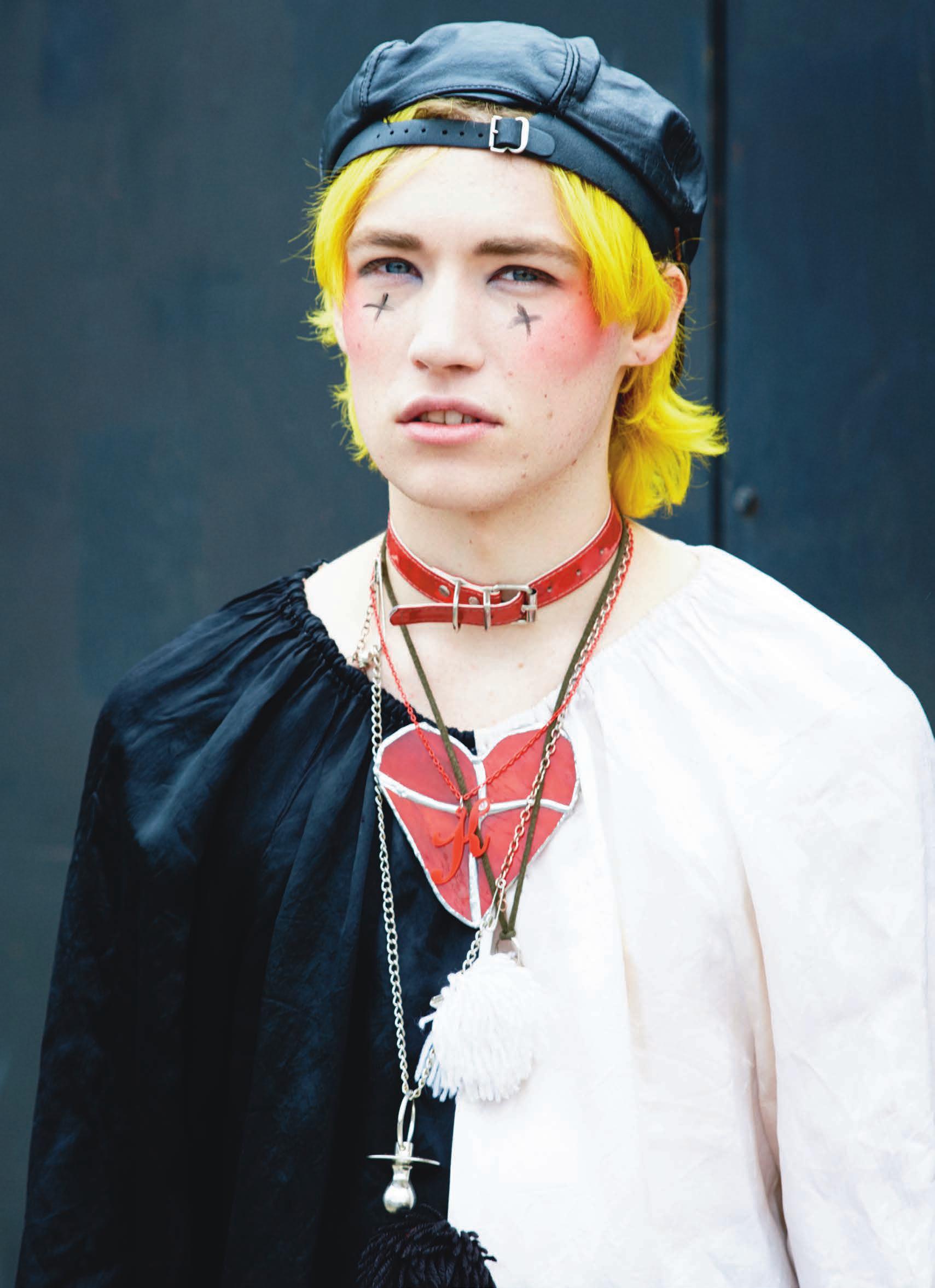
Although I did dye my hair green the other month and that was a disaster
DB: Your best trait?
KB: Er, I dunno physical or personality wise?
DB: Up to you ...both
KB: My attitude: I think I have a pretty good attitude, which seems to be working for me.
DB: Thank you!
KB: You’re welcome.
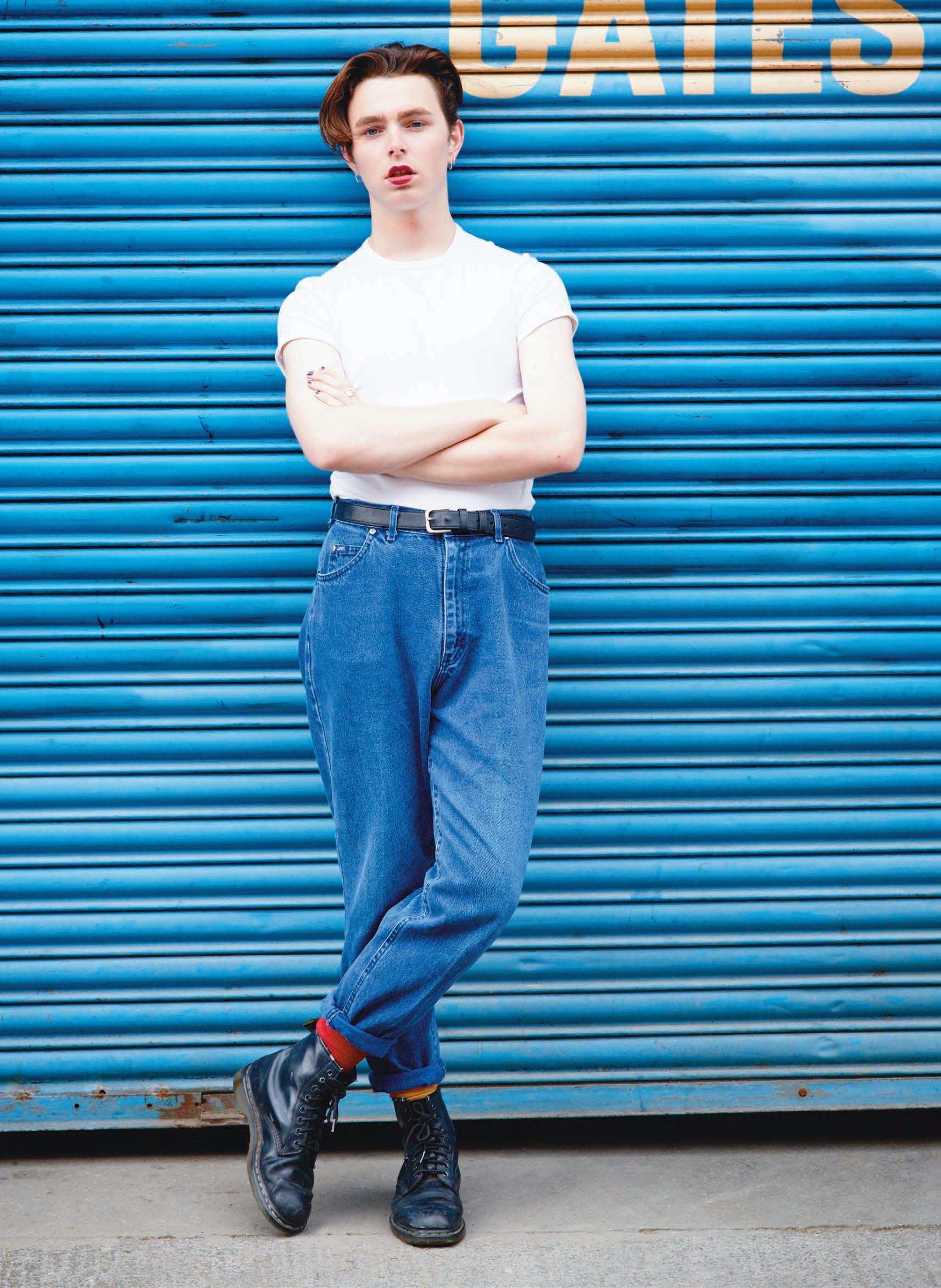
FULL NAME: Finnbar Love
PROFESSION: Artist and Post-Grad Student
FROM: Suffolk
LIVES: East London
DB: What’s you best and worst trait?
FL: My best trait is my focus, but it’s a double-edged sword, I’m good at recognising what I want and doing everything to get, to achieve it. But often that can mean I ignore other important things. Like other peoples needs… or the washing up
DB: LOL, I think we can all do that. So you are a postgrad art student. Is that Fine Art? What sort of things do you focus on?
FL: I’m studying an MA in theatre and performance, so it’s practical artistic development mixed in with theoretical and academic research.
DB: Cool, so you are an actor then or performance artist?
FL: Definitely not at actor. I guess you could call me a performance artist... I tend to just say “artist” because that can include other areas of work or creativity such as my academic writing I guess,.. if you call wearing underwear and rolling around on stage performance art then I’m a performance artist haha!
DB: So I guess I’m wondering, where do you ‘perform’ your stage rolling? Sounds pretty cool. Any favourite clubs or bars?
FL: I love The Glory, in Haggerston - I seem to be spending my whole life there at the moment, either on the door or at the bar haha! I also love, and am a part of the Sink the Pink family, which has provided loads of amazing opportunities to perform across London and
the country at different venues and festivals.
DB: Describe the mood at Sink the Pink?
FL: The vibe is always really fun loving - these nights and venues are all about not giving a shit, although we’re in a crisis at the moment, So many historic and significant queer venues have closed down, and now we’re facing the closure of The George and Dragon and potentially the Royal Vauxhall Tavern.
DB: Yes, that is a shame isn’t it? What do you think about the future is like for London’s creative ‘scene’?
FL: I’m worried, I mean in the past three years I’ve been priced out of every flat I’ve moved into. This housing crisis paired with venue closures is pushing artists and creatives out of the city in favour of young professionals and those who can afford the luxury flats that are taking over the whole of London
DB: Yep. Sucks doesn’t it? Will creativity survive here do you think, or move someplace else eventually?
FL: I don’t think “creativity” will die as such
DB: Your biggest mistake?
FL: Choosing a drag queen as a best friend. ... I mean it’s great, but it makes life very difficult. We’re both bad influences on each other in equal measures I think. But she’s a monster
DB: Can you name this friend of yours?
FL: Rodent DeCay haha
DB: I love drag names don’t you? So inventive aren’t they?
FL: Yeah me too! Not hers though, hers is shit I’m joking. I kind of want one, but Finn Love already sounds like one, so I think I’ll stick with it. Saves having two FB profiles.
DB: Yep, you have a cool name already. Love is an amazing last name. Is Love your actual name or did you pick it?
FL: Ha ha no it’s my family name! This Valentine’s Day I ended up chatting with two guys and halfway through we realised that our surnames were “Love” “Heart” and “Kiss”How crazy is that?
DB: That is crazy
FL: I know, they were amazing artists as well; it was quite an overwhelming moment. My flatmate’s surname is Finn… I think we should get married so I can become Finn Finn.
DB: 5 words that sum up how you think other people see you?
FL: A bit of a cunt
DB: LOL!
FULL NAME: Johanna Londinium
PROFESSION: Model / Events Host / Icon
FROM: Mixed race: Irish father / Indian mother LIVES: Old Street
DB: How do you describe your sense of style?
JL:Very mixed up to mashed up. I draw reference from fifties glamour to nineties supermodels. Sometimes overtly feminine, sexually sometimes super androgynous. All black everything most of the time...
DB: Except the red. Loving the red hair. Is that new?
JL: Yes... The red hair is new and here to stay , especially after the 7 hours it took in the salon to strip out the black hair dye
DB: Any style icons you especially love?
JL: I love all the fifties icons... Marilyn Monroe and Bettie Page I love Daphne Guinness’s vibe. Also was reminded yesterday about a documentary about ageing New York socialites who still embrace individual style: super cool!
DB: Name someone famous you’ve never liked?
JL:Eeeuuukkkt . To be honest... LOTS but I do try and reserve judgment until I have met someone and established for a FACT that I don’t like them There are lots but am not naming names. There is genuinely no one in this world I actually hate though
DB: Fair enough. If you were an animal what would you be?
JL: A tropical bird... So I could feel beautiful AND fly
DB: Awww
JL: Or a cute little monkey in a jungle so I could feel humanoid to an extent but still swing around the trees like I just don’t care
DB: What about London, any special ‘haunts’? Where do you like to hang?
JL: One of my favourite places is the Japanese Garden in Holland Park. I have always found it a useful place to go on my own when I need to gather my thoughts or get my “Zen” back in place.
DB: And for the evening?
JL: I love the river by night. I’d say seeing London by night from the riverside is the only way to appreciate the beauty of this city
DB: Has London changed much since you’ve lived here?
JL:Certain parts of London stand out to me...I remember the first times I visited the city and stumbling across Soho on a school trip. Ain’t like that no more, LOL! It’s lost it’s raw, underground sexual character . Such a shame. I think London in general feels so much more gentrified.
DB: Yes, has that rawness moved somewhere else?
JL: So many more luxury apartments blocks, offices,
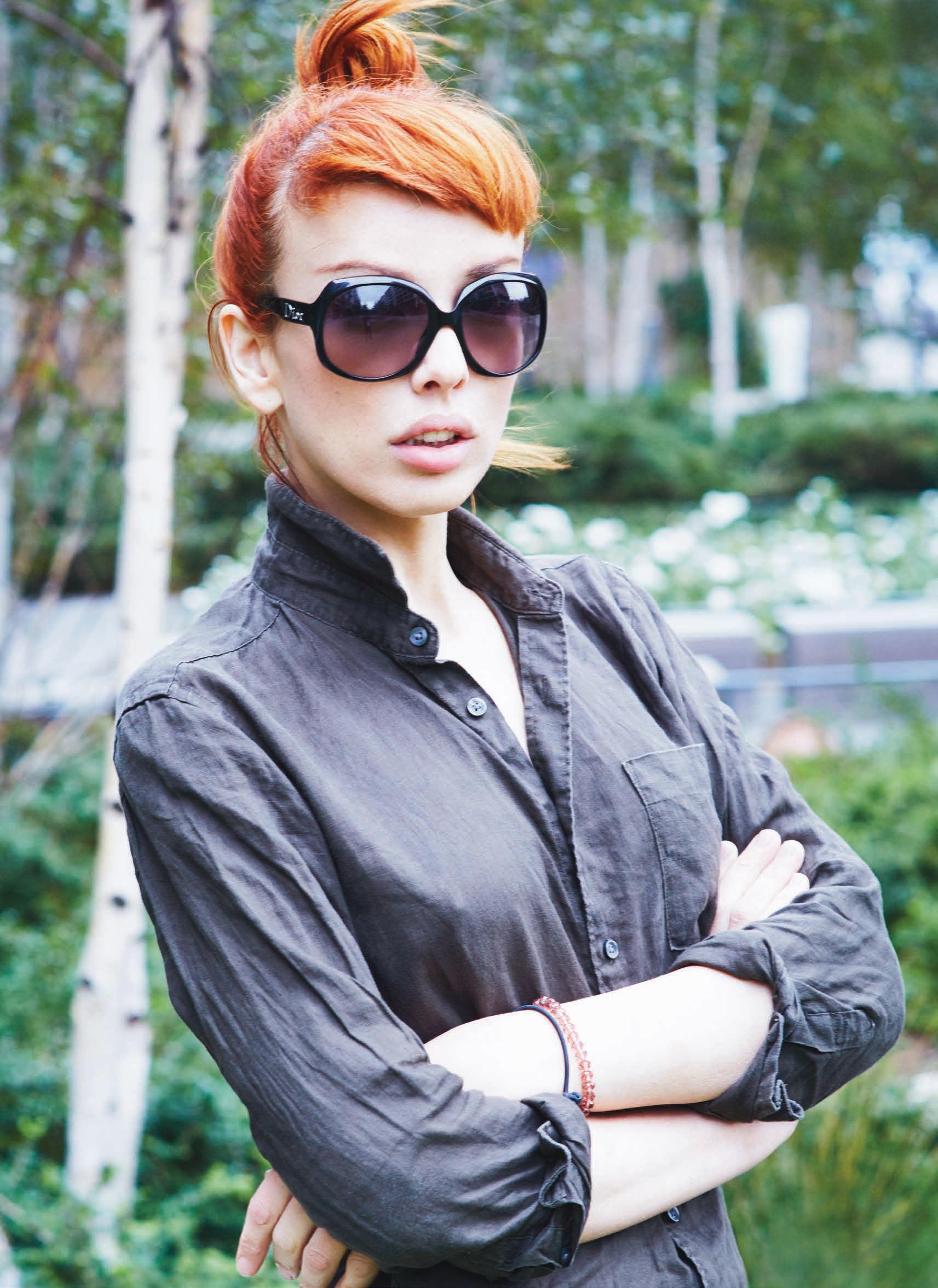
high street chains are taking over the little pockets of character that were everywhere . A difficult question actually. There are certain places you can go to in London and feel character but definitely out of zone one and two LOL!I don’t think there is anywhere left in London that has the vibe Soho had back in the day...
DB: Any chance of kids on the creative ‘scene’ giving up on London?
JL: No. I doubt that.... London will always be a place where people come to discover themselves, express themselves and their creativity London is still a melting pot for all sorts: culturally, socially and sexually speaking and I cannot imagine that changing . Nightlife, the river, the parks, the energy, public transport (when it runs).
DB: OK, last question, what is your best and worst trait ?
JL: My best trait is definitely my ability and desire to love. Love makes the world go round. I guess that could also be my worst trait on occasion. Life and experience has taught me never to live with my heart on my sleeve but also to never to be too guarded with emotion. I guess wise words of advice, (not that that was the question, LOL!), would be too reserve judgment on someone and never take someone at face value. Always trust your instincts. Off topic moment much? LOL
DB: Thank you Johanna <3
JL: x x

FULL NAME: Kevin Brennan PROFESSION: Artist FROM: Galway, Ireland LIVES: Hackney
DB: Can you tell us a bit about the type of art you make?
KB: I wouldn’t be able to say too much in this interview. I generally work with a range of media. Paint, video, sculpture, performance. That’s all I usually say. I tend not to talk about it that much. I prefer people to see it.
DB: What traits best define you?
KB: Loud, shiny
DB: You have a very distinctive sense of style. How do you describe it?
KB: Uncomfortable at times
DB: Any fashion heroes?
KB: I actually know very little about fashion. I generally just get ideas from friends, movies, video games, clubs, everywhere.
DB: Which clubs are your faves?
KB: I feel in London there isn’t a particular club you can go to that will be great every time. It’s more to do with what night is on in the venue. I went to a fantastic night last week in Camden where I have never been out, and this week I’m going to Chapter 10 in Hackney Wick. You kind of need to just to keep your eyes peeled for what’s on. I’m inclined to go more for the music.
DB: Cool, so music is very important for you then?
KB: Yep
DB: Anyone in particular?
KB: I couldn’t choose one!
DB: Something you always wanted but for some reason never got around to owning?
KB: A swimming pool or jacuzzi. I’ll get around to it.
DB: The kitschiest thing you own?
KB: A framed low-res picture of the pope kissing a child that lights up when you plug it in
FULL NAME: Afonso Amil Peixoto
PROFESSION: Occasional model and DJ
FROM: Lisbon, Portugal
LIVES: Clapton, East London.
DB: You have great style Afonso. Let’s start there. What inspires you in fashion or style?
AP: What doesn’t inspire me? That’s a loaded question. I don’t think there’s anything that inspires my style directly, to be honest.
DB: Where you like to go out in town?
AP: The George and Dragon, VFD… anywhere East. I like Dalston and Stoke Newington a lot. Also I like south, a lot of my friends are moving south and it’s really nice....It’s really sad that The George is closing. I go there all the time. That’s where I DJ’d for the first time! I have so many good memories there.
DB: You mentioned south. Where in south do you like ?
AP: New Cross, Peckham...
DB: Describe your habits?
AP: I don’t have many habits at the moment other than going out... how depressing hahaha
DB: Any guilty pleasures?
AP: Lambrini. Hehe
DB: Your happiest memory
AP: Can’t think of anything
DB: Favorite band or musician?
AP: Oh my god I don’t have a favourite band!!! I sound so boring but like I can’t pick one band or singer ...well lately I’ve been listening to a lot of Amy Winehouse, Hercules and Love Affair, Scissor Sisters...
DB: Thanks Alfonso
AP: Cool thanks x


PEOPLE ARE BEAUTIFUL PEOPLE ARE BEAUTIFUL
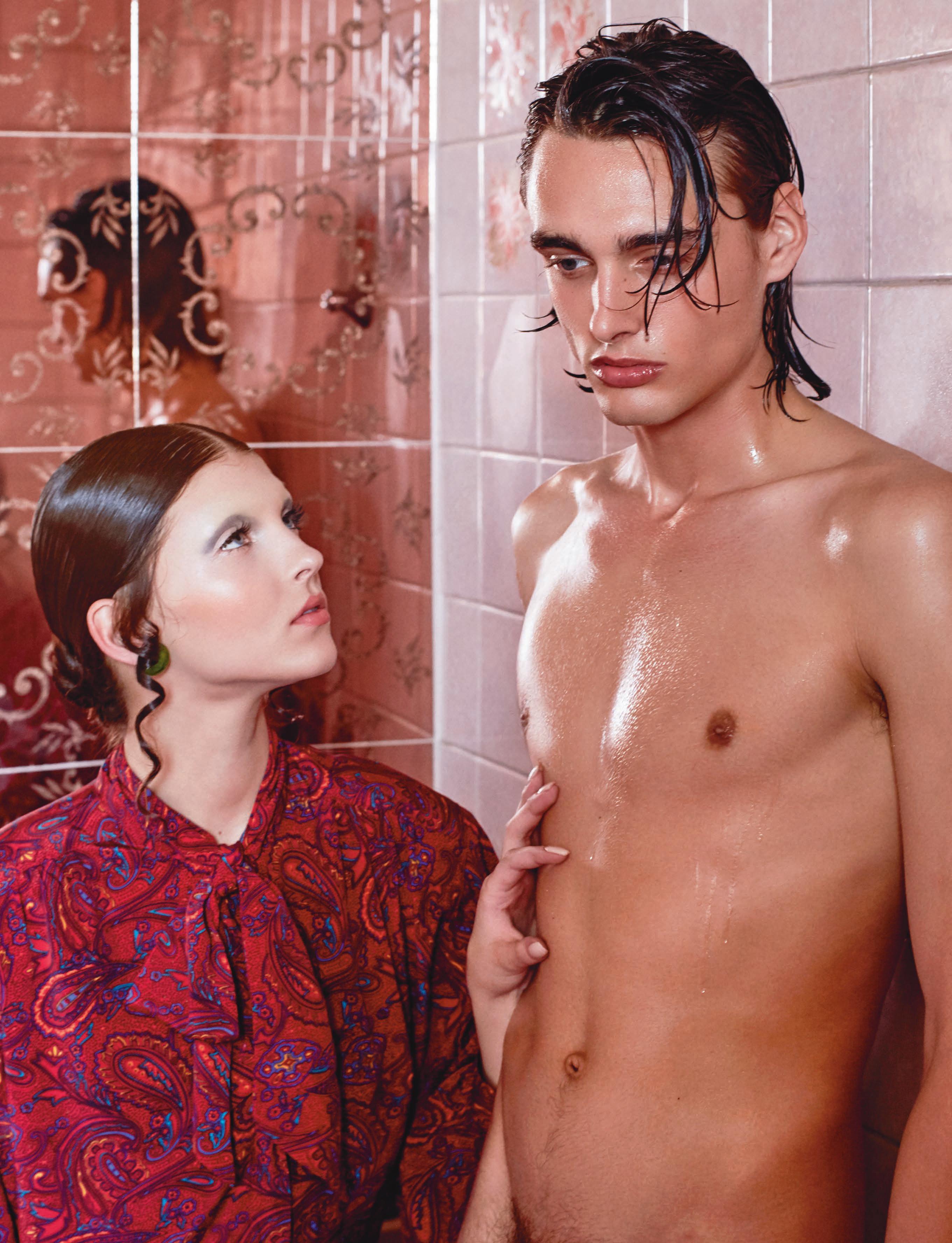



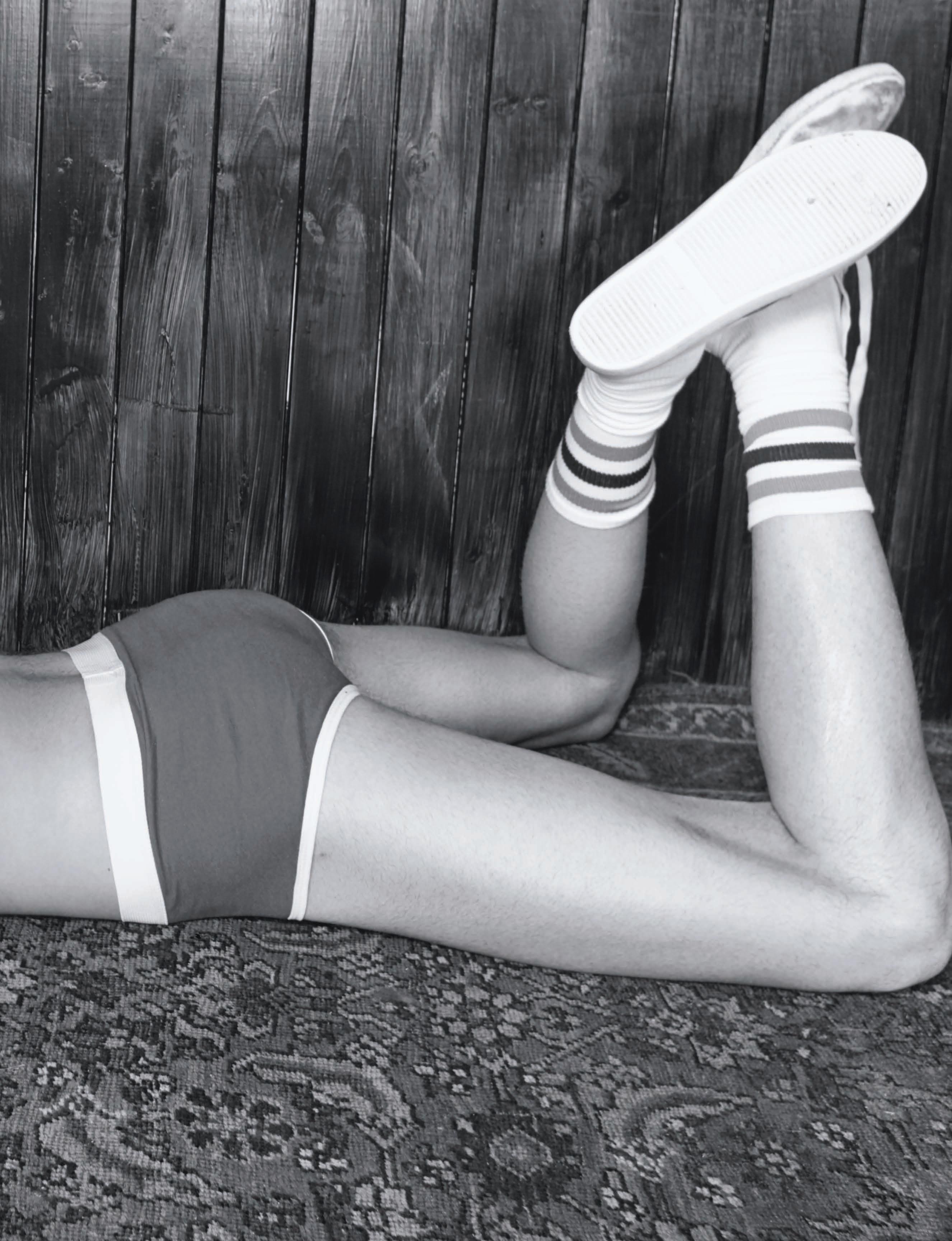

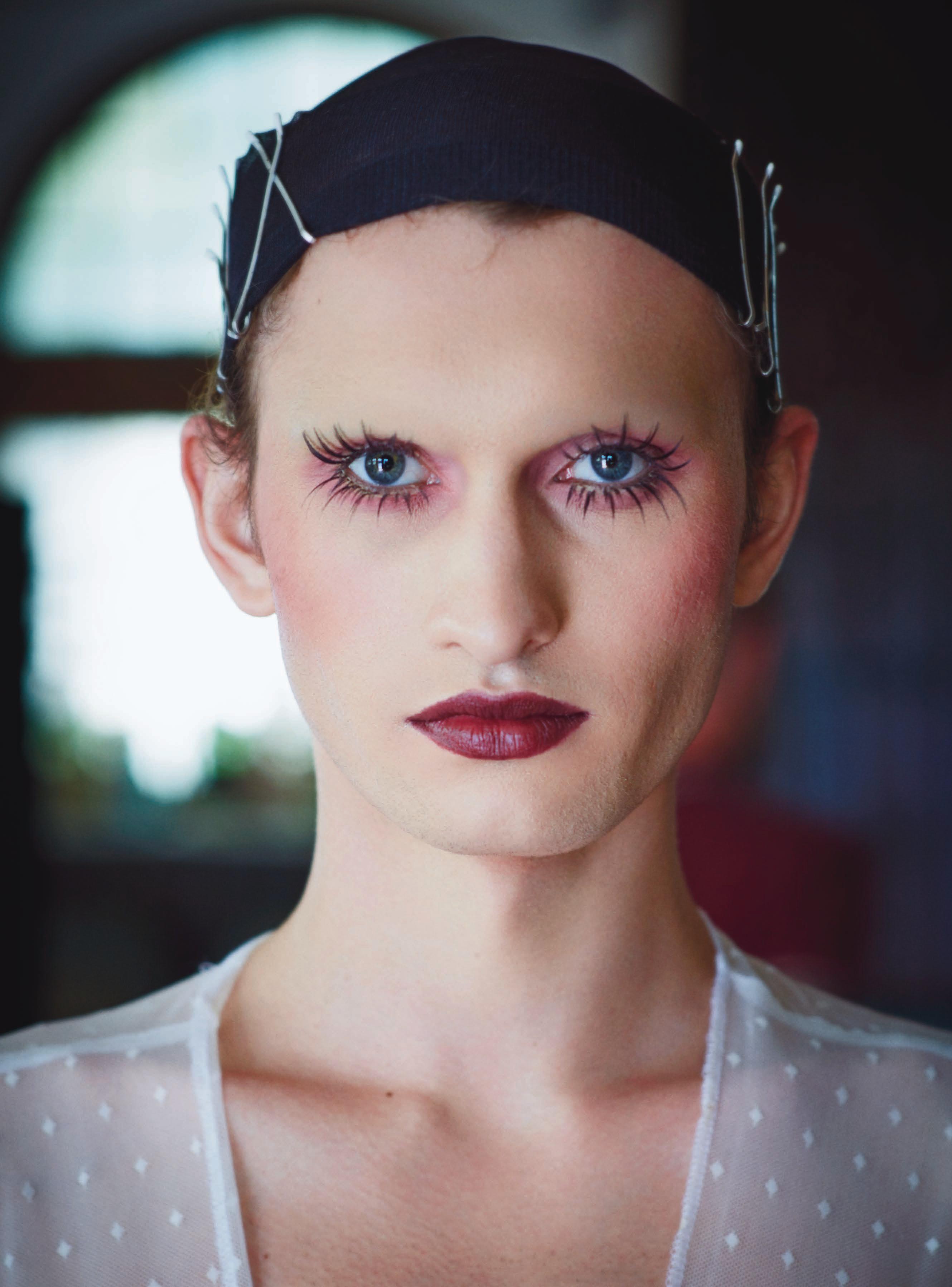
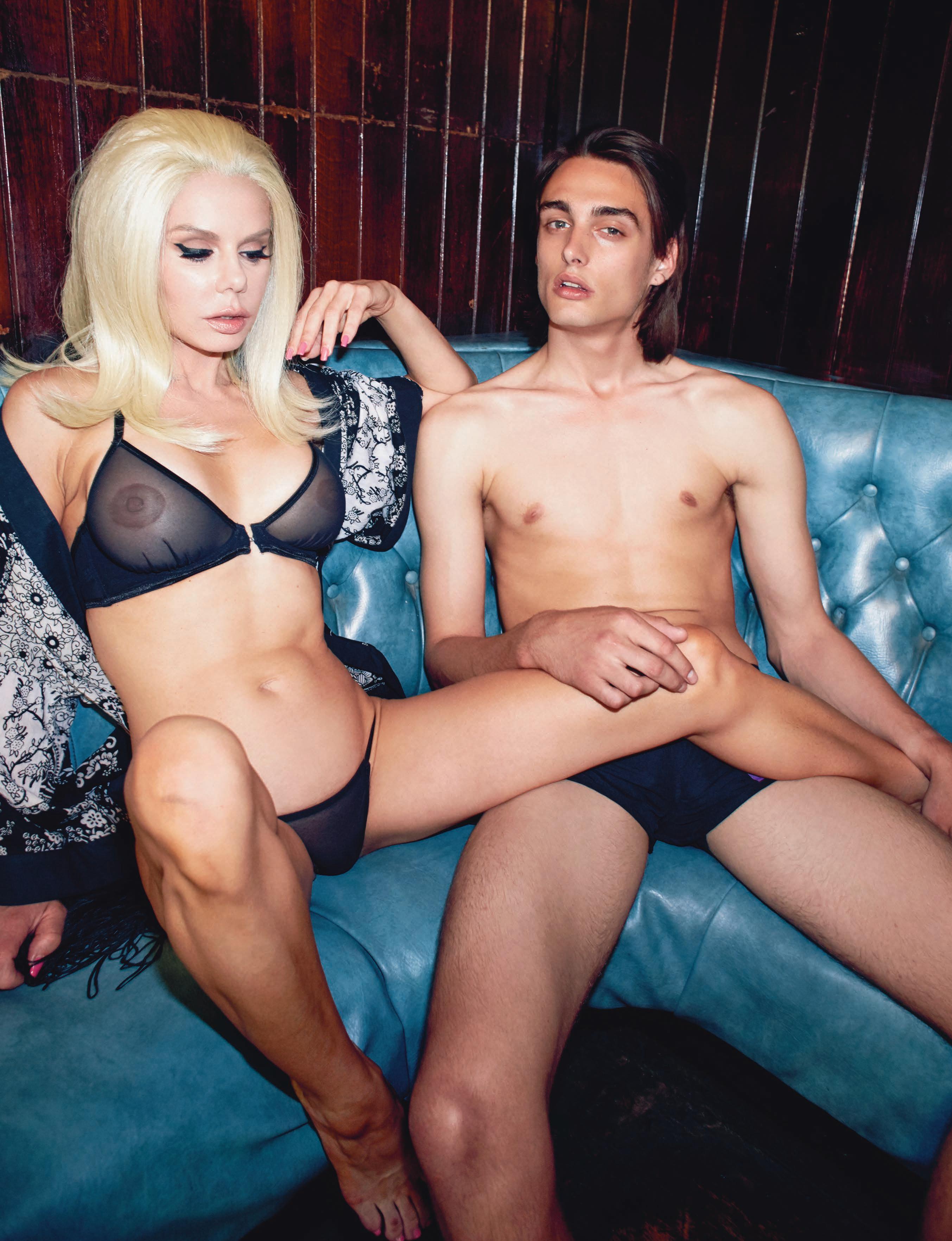

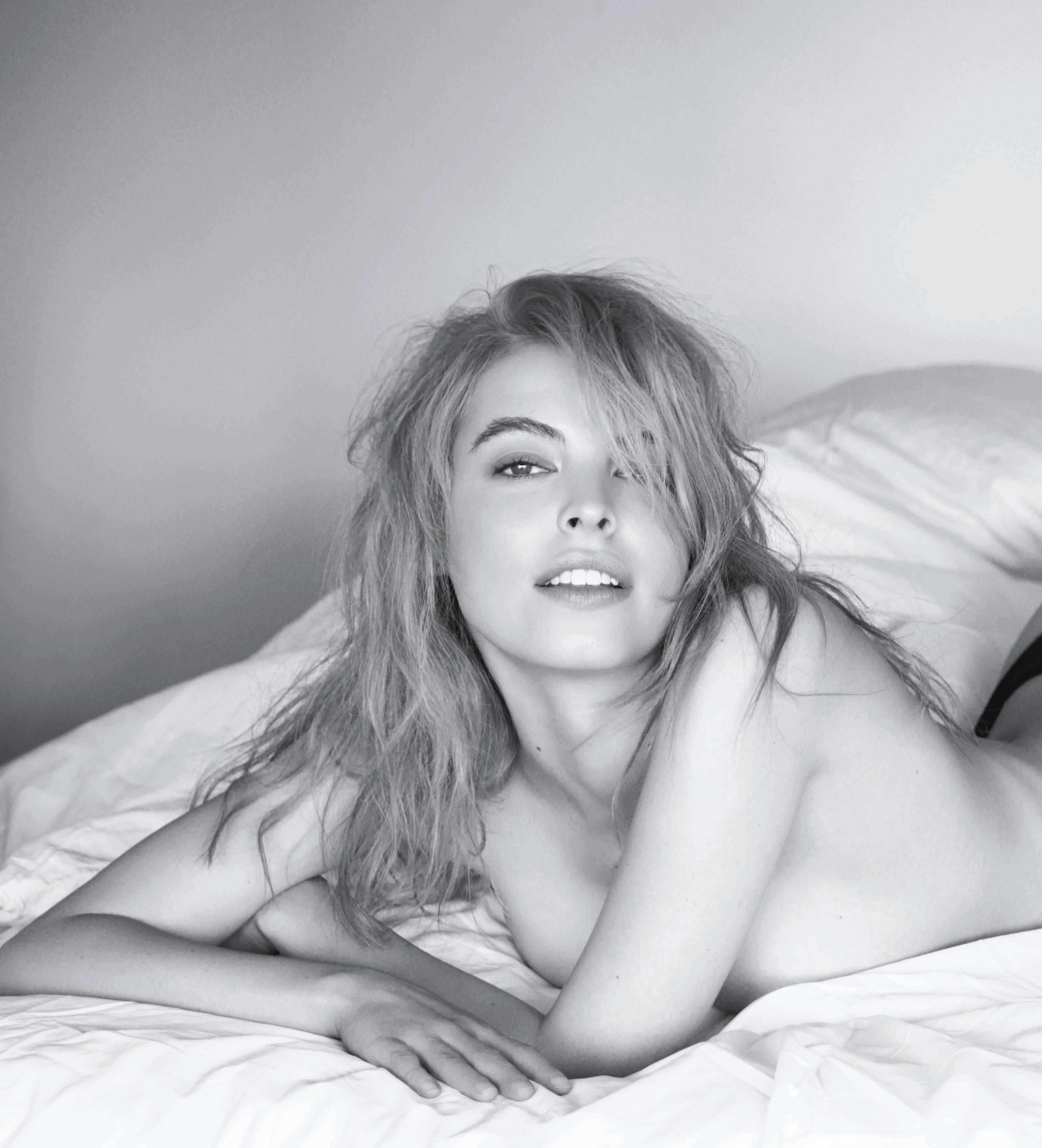
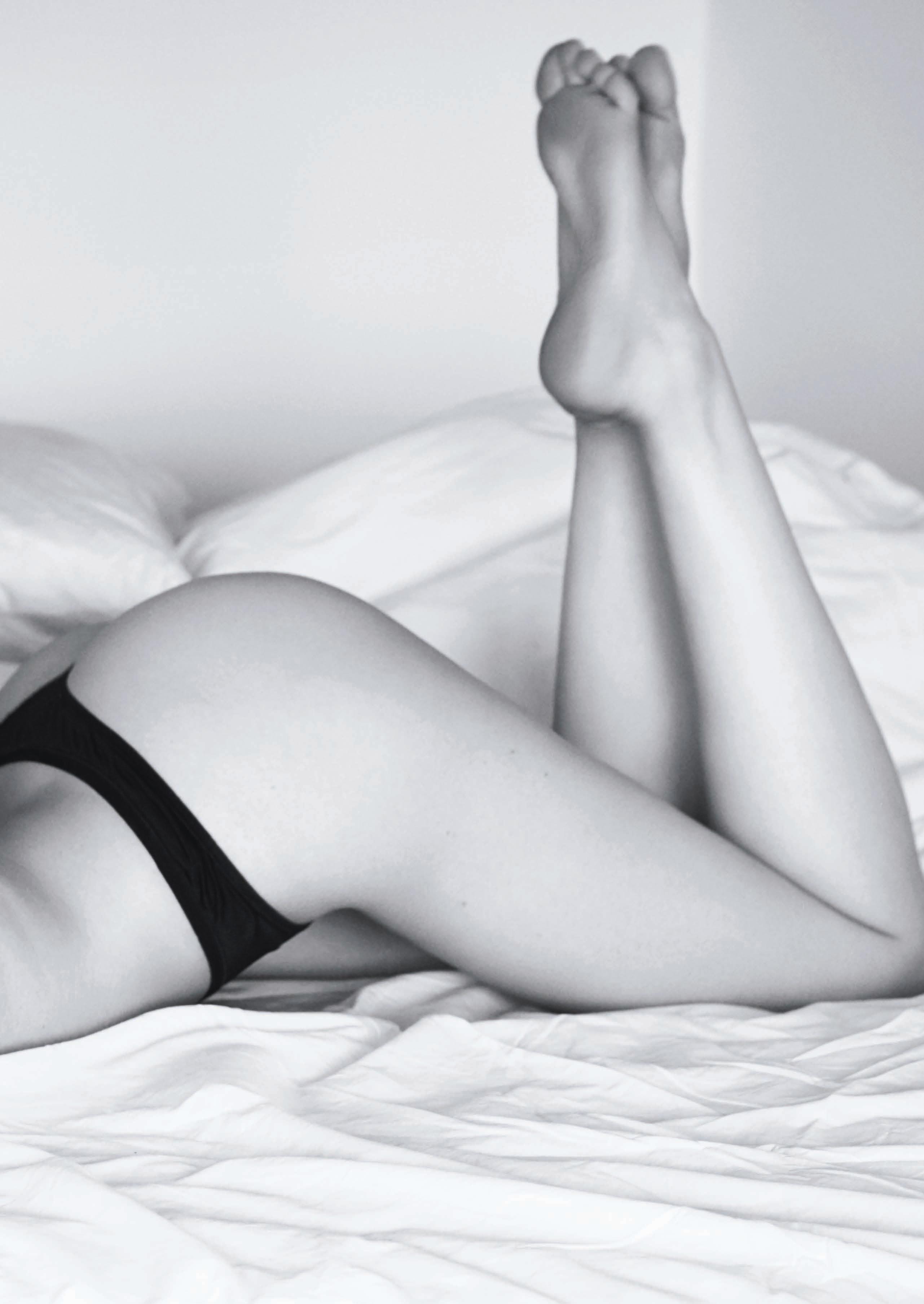



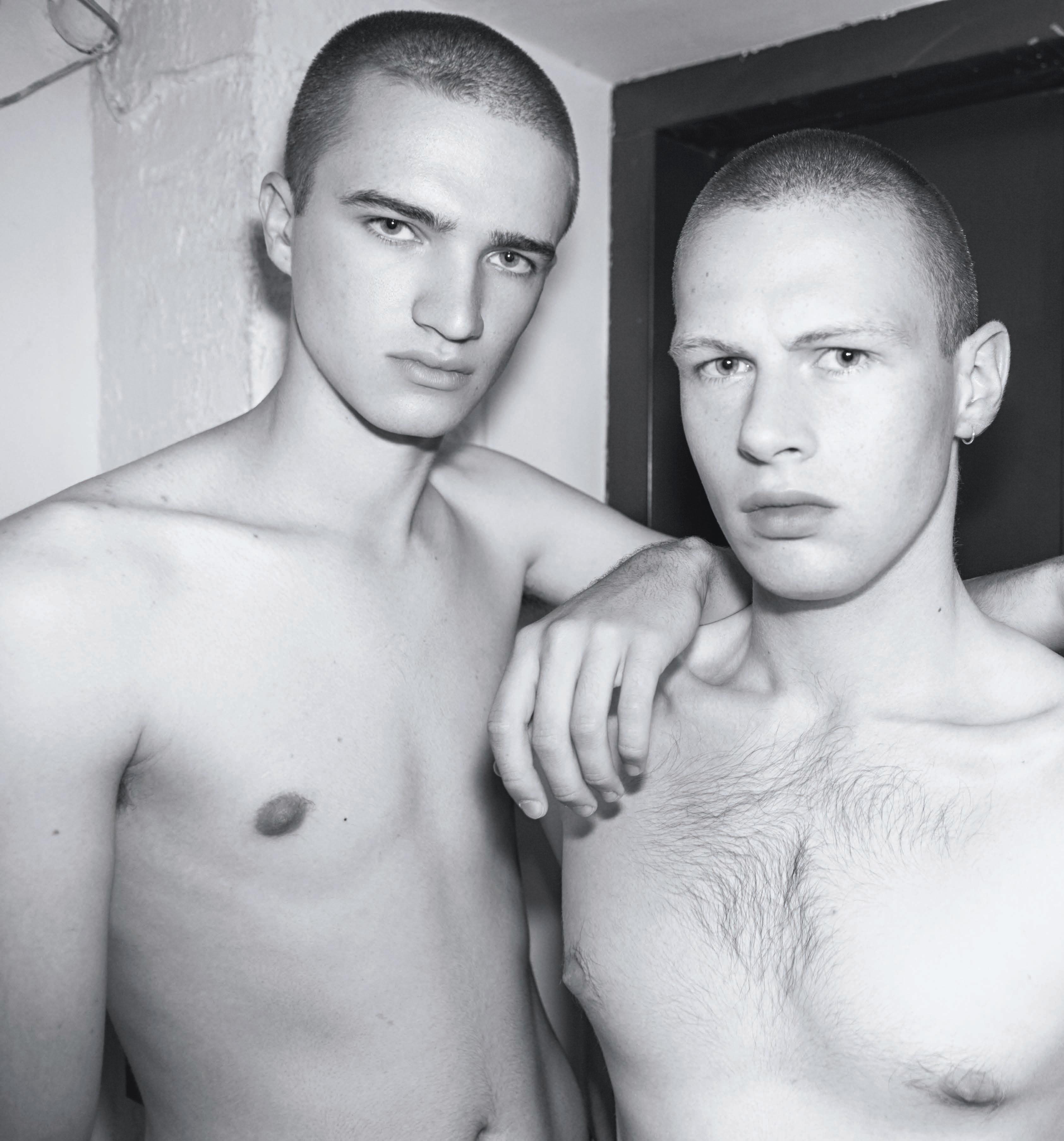




PHOTOGRAPHY ASSIST: MARIJA VAINILAVICIUTE, JESSICA THOMAS FASHION ASSIST: YULIYA OLEKSENKO
MODELS:
BERTIE PEARCE @ ELITE MODELS
ANASTASIA LAGUNE @ STORM MODEL MANAGEMENT
CHARLI HAYES @ SUPA MODEL MANAGEMENT


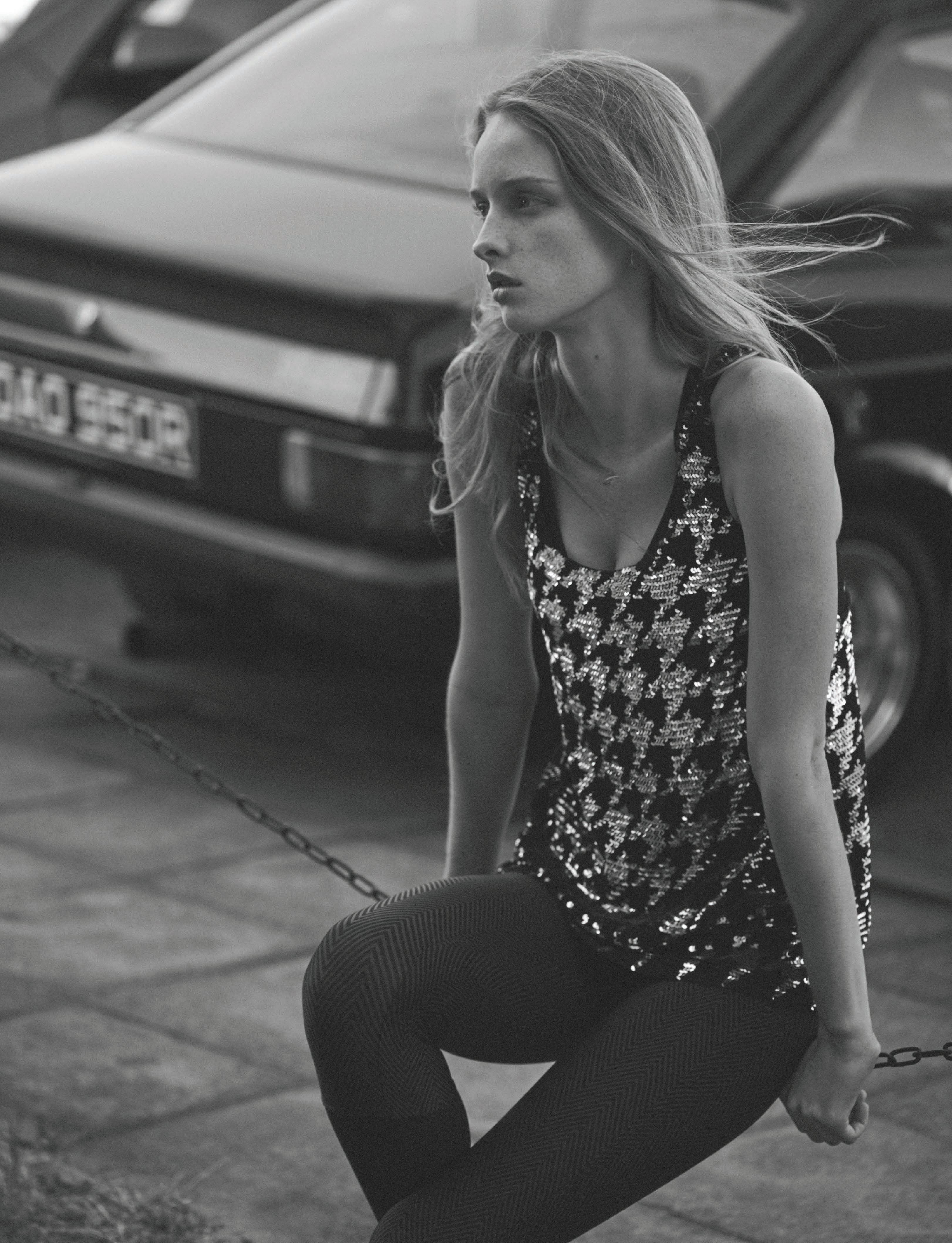




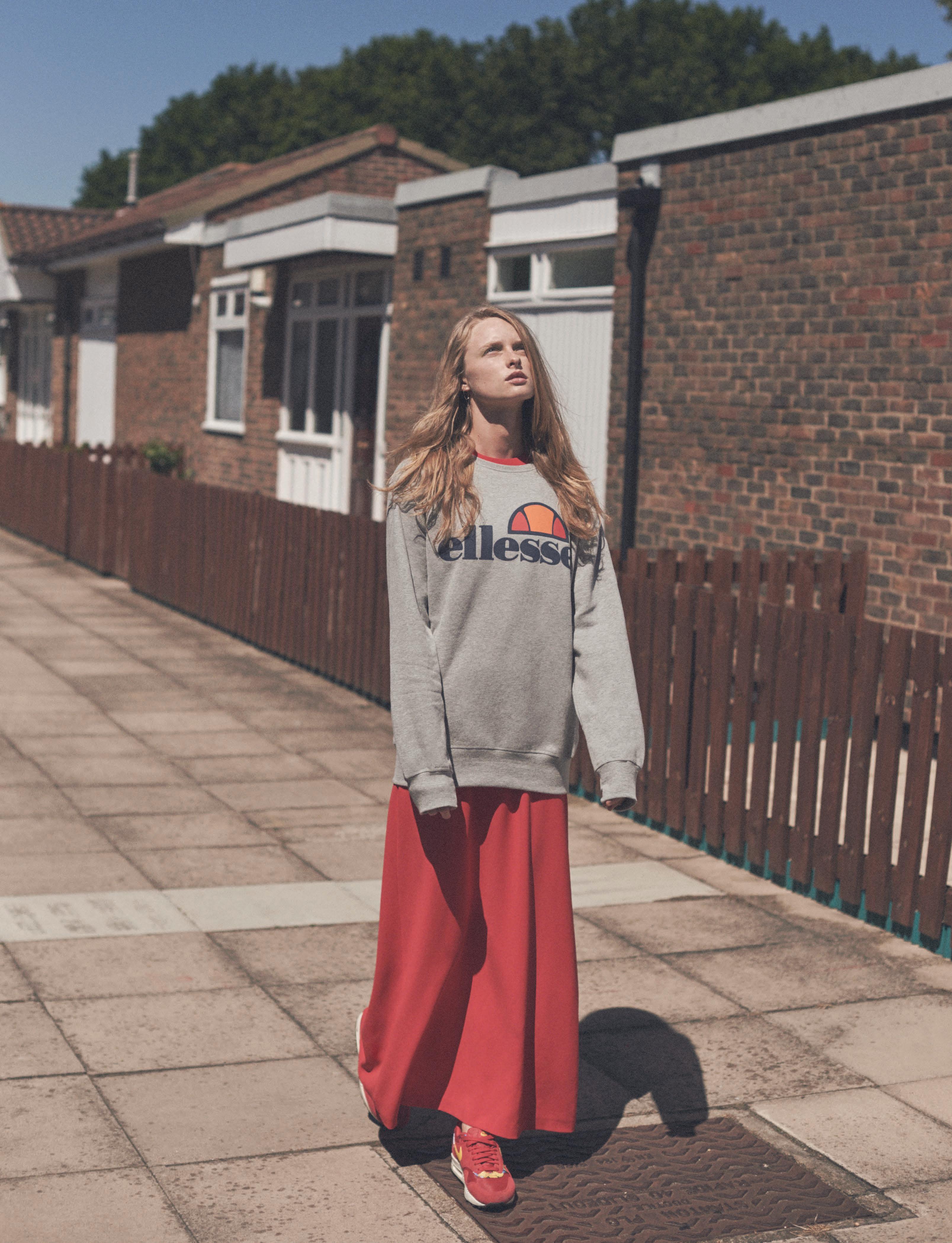
DIGITAL:
MAKE UP: KENNETH SOH @ FRANK AGENCY USING ALPHA H & AMAZING COMESTICS
It could be more important than you think!
TEXT: HARRY JAMES IRVING


Over the last ten years or so, I’ve found myself toying with the music industry as both an artist and a businessman. Fortunately, I’ve enjoyed success with both, particularly as a professional musician and despite all the ups and downs; my interest in both sides of the industry remains as strong as ever.
With that in mind, lets start with Apple Music. For those of you that are not up to speed, Apple, the global leader in pretty much everything it seems, has launched its very own advanced music streaming service for iPhone to rival Spotify, Pandora and the countless others that have got in on the act. As a person at the wrong end of my twenties, this was of huge significance to me, as it finally cemented the transition of physical to digital music consumption.
Sure, you’ve most probably heard this a thousand times now, but gone are the days of heavily investing time and money in new bands and artists, waiting patiently for an album or single release and then making the journey to your nearest Virgin megastore or HMV. I remember the excitement this gave me in my early teens. My mother on the other hand was not so happy, as she had to put up with me blasting my new purchases at full volume in her car on the way home!
Whilst I don’t get the buzz I once did when purchasing or ‘streaming’ a new record in today’s musical climate, I
appreciate that the advancement in technology does have its perks too. Whilst the cynics will argue that digital music and piracy have crippled the industry, others will be thankful for the increase in choice and practicality, particularly the mainstream consumer. And lets be honest here, if more people are obtaining music legitimately than they were a few years ago, surely that is a good thing too?
I must confess that I used to be one of the aforementioned cynics, however, I can’t help but admit that I do use these new, advanced services and it does make life easier, especially when on the move. Nevertheless, I fear that such advancements are already proving detrimental to another key side of the industry… the live sector.
At this point you may be wondering what technology has to with live music? Sure, on paper, they are two totally different aspects of the music Industry. Since Internet piracy became such a hot topic however, I’ve heard countless people argue that the live sector has boomed as a result. Whilst there are stats that support this, it is still relative in my opinion. Of course if one thing is suffering, the other looks even more promising. My fears do not concern the ‘heritage’ acts and chart-toppers that are selling out arenas all over the country, instead it is the music acts of the future that I fear for.


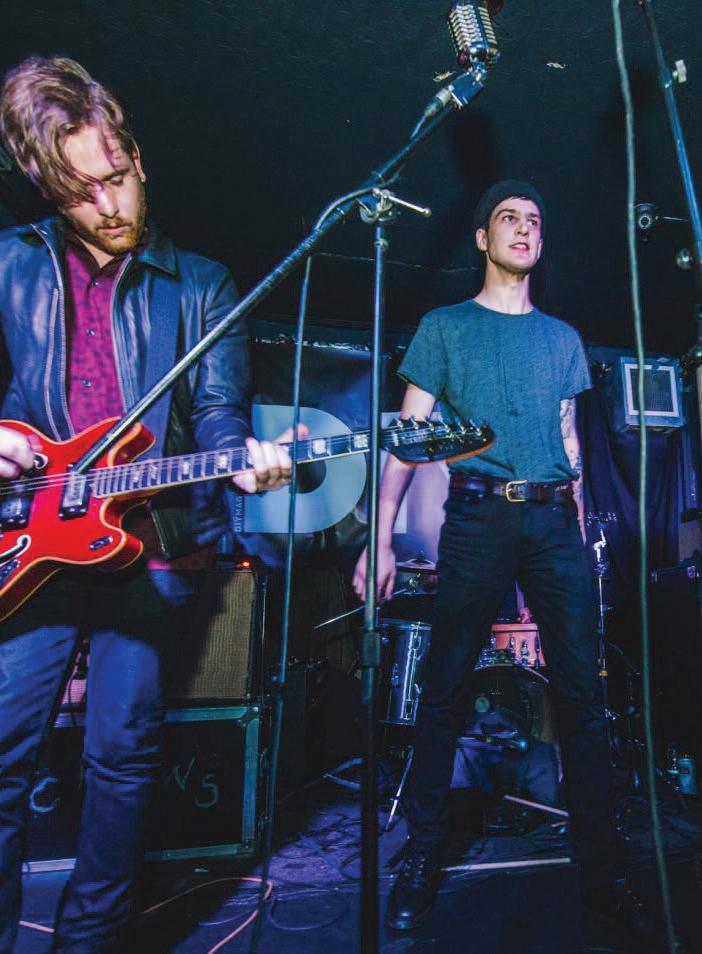
It’s no secret that young people in modern society have a lower attention span than that of generations past. This is unsurprising considering there have been so many technological advances that enable individuals to skip between things so rapidly, and simultaneously in most cases. Even now, I am writing this on my Mac, with Facebook open in the background, whilst my iPhone 6 is streaming a new album through my stereo via Spotify! When considering music consumption specifically, the overwhelming amount of choice at our disposal means it is so easy now to get distracted or just choose to move on from something quickly, thus reducing our ability to follow bands and artists devotedly.
When I was younger, I bought an album and I listened to the thing in its entirety. I bought magazines and followed those bands religiously and as soon as they toured, I was there! Now, when I use Spotify or Apple Music, which I have acquired recently, I don’t even need to do any work, as playlists and potential albums are recommended for me automatically. And if I don’t like them, I just hit search and play one of my favorite bands in seconds. The trouble is, I rarely see new bands, it’s usually ones already established. If I’m not hearing anything new and exciting, I’m probably not likely to go seek them out at a live gig!
But regardless of technology, there is another hugely significant trend that I fear could be extremely detrimental for new talent, and that is the increasing number of live music venues and clubs being closed down. Take the iconic ’12 bar’, formerly on Denmark St, which has featured the likes of Jeff Buckley, The Libertines and even Adele. This shut down last year as a result of, you guessed it, property development and followed the likes of other Soho favourites such as Madame


So you get the picture, things aren’t looking good for London’s live scene. Sure, you have the larger venues thriving such as London’s 02 and Wembley Arena, yet for most bands, particularly blossoming ones, these don’t even come on the radar. These are venues for established artists. Most revenue that accounts for the aforementioned ‘booming’ live sector actually comes from heritage acts… you know, the ones that have been around since before we were born.
It would appear things are looking bleak for new acts. Technology is out of control and every cool, underground venue you can think of is closing down, right? Wrong. There is hope.
Like anything, there are always hidden gems out there; you just have to look for them. I myself can admit that until recently, I’d become lazy, falling for the traps of modern technology. I stopped looking for new talent, reading gig listings, or just rocking up at a cool venue on the basis that there might be a band playing that my friends and I enjoy. However, lets not forget that London is still one of the best cities in the world. Despite all the changes that have occurred in recent times, there are a number of great music venues still out there.
I first had the idea for this article having visited ‘Ain’t nothin’ but’, a bona fide blues bar located on Kingley street, just yards away from the modernist haven that is Carnaby St. Here, they have blues musicians young and old, performing almost every night of the week. The place is rough and ready by nature but more importantly, it’s authentic. It’s everything you’d hope would represent a genre such as the blues. Most people I know, particularly musicians, are unaware that this great place exists and it got me thinking, maybe there is hope.
Now the blues isn’t going to be the saviour of modern music, but there are plenty of other places still out there that will play a vital role in the promotion of new artists. If you’re south there’s the Bedford in Balham or the Windmill in Brixton, the latter having been frequented by Bloc Party in their early years. Similarly, further north you’ve got The Hope & Anchor, The Lexington and The Old Queens Head, all accessible via Angel. Camden is still flying the flag with places like the Dublin Castle, Underworld and Purple Turtle, whilst east London has got some real gems. Take The Old Blue Last, Bedroom Bar, Underbelly and Shacklewell Arms for example.
When compared to the O2 arena, all of these venues are minuscule, yet many of them have been graced with some of the most prevalent names in the business. Of the venues



mentioned here, acts associated with them include the Arctic Monkeys, Lily Allen, Bombay Bicycle Club and the late Amy Winehouse, just to name a few. One Venue that hasn’t already been cited but is still thriving is The Half Moon in Putney. Still hosting live music every night of the week, this particular setting was once graced by legends such as The Rolling Stones, U2, Kate Bush and Elvis Costello.
So there you have it… London is still has wonderful venues, rich in history yet still as relevant as ever. Whilst I have only touched upon a few of them, I hope that you feel inspired to get out there and discover them yourself. I hope that with our support, live music in London will thrive and continue to provide the opportunities for the future talent that may just shape the industry.

Harry James Irving is a professional musician specialising in electric guitar and bass. Having been originally signed to Club AC30, Harry went onto record an album with legendary producer, Pat Collier. Recently, Harry has worked with Greighwolfe, performing in the UK and US, including shows at SXSW in Austin, TX.



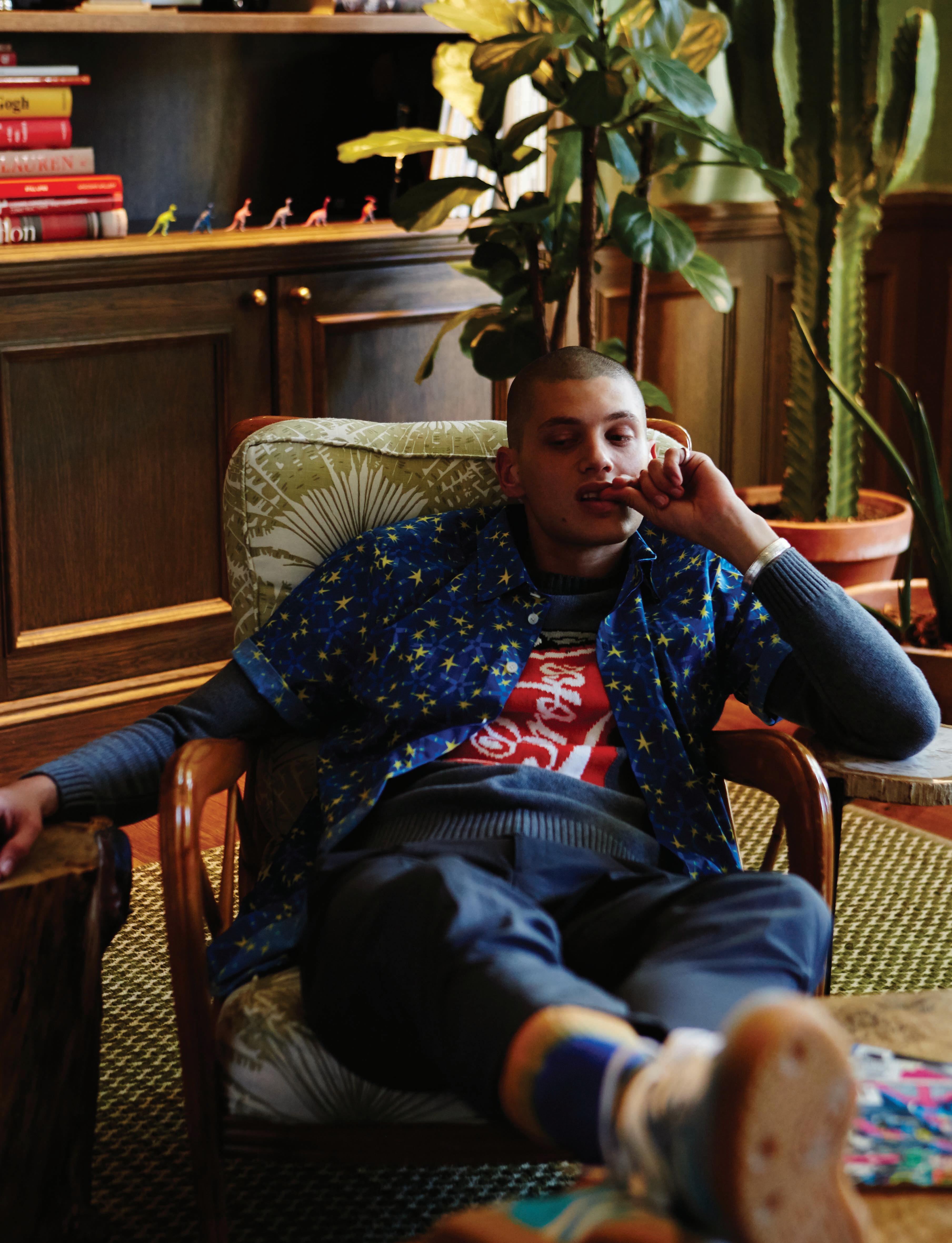




MAKE-UP: DANIELLE

@ THE BOOK AGENCY
AGENCY

PHOTOGRAPHY: YANN MORRISON
WORDS: CRISTIAN BURBANO
28 year old Wilfried Lantoine launched his eponymous label back in 2014, creating a unisex ready-to-wear brand that is urban, elegant and timeless, inspired by art and uniforms. Lantoine honed his craft with stints working for such heavyweights as Balenciaga, Matthew Williamson, Alexander McQueen and Nina Ricci; we caught up with the Frenchman to get some insight into his life, work and the new collection for AW15.
How did you get started?
I am the Creative Director and founder of my namesake label. The brand is based in Paris and is a little over one-year-old now. I started this project out of the various experiences I’d had in Belgium, Paris, and London. After studying fine art, I decided to study fashion in La Cambre. From early on in my career I’d been fascinated by men’s fashion, but I also wanted to work in women’s fashion in order to explore all the possibilities within the industry. So I started working at the Balenciaga studio, then run by Nicolas Ghesquière because I’m fascinated with his experimentations, from there moving to London working with Matthew Williamson, where I was in charge of the design of embroideries, eventually arriving at the McQueen men’s department.
Working at McQueen must have been something, how was that and what did you learn from it?
Arriving in London, my dream was to work at Alexander McQueen’s men’s department. That experience was defining for me. What fascinates me about McQueen is that research is aligned with modernity and knowhow; with everything being drawn from a heritage. That approach resonated within me, and I am now working with my own appropriation of it. Coming in contact with such a powerful and rich universe convinced me that I had to write my own history. Going through Alexander McQueen’s archives remains for me a precious memory. I also learned a lot about the force of work and rigor that a team can produce when it’s trying to create a dream. The need to realise customers’ along with your coworkers’ dreams is a strong drive when creating your own brand.
Tell us a bit more about your label Wilfried Lantoine? What’s the look and who is your target customer?
It’s a young brand based in Paris. The brand’s philosophy is to create unisex apparel. The conventional sexist codes of dressing and styling are pushed aside in order to free the body. The pieces of clothing are urban, elegant and timeless. They are inspired by dance, uniforms and the arts and are aimed at creative modern men and women. Every material used in the collections is sourced carefully; pieces are manufactured in France in the best ateliers. The idea is to offer high quality clothing with a strong design, tailored for elegant women and men’s urban lifestyles.
What are the difficulties of starting your own label?
My main difficulties were trying to draw the right people to me, which takes time especially as I like to drag them into my universe in order to produce innovative pieces that are the result of an exchange between us.
What are you most proud of in your AW15 collection?
The winter 2015 collection was inspired by the uniforms of the Finnish marines as portrayed in the book Wilder Man from photographer Charles Fréger. The silhouettes build up like characters from Marguerite Duras, simultaneously lost in time and contemporary. Raw materials like heavy wool contrast with precious ones like silk, and constructed shapes respond to flowing shapes.
You’re based in Paris; does the city play a big role in the label/your inspirations?
Parisian style, both elegant and intemporal, has always been important to me and remains present in all my collections.
What can we expect in the future, have you already started working on SS16?
I am starting now to push fabric research and the application of different techniques. For the SS16 collection we worked on prints inspired by French artists like Sonia Delaunay and we worked with lace for menswear.
What are you hopes/goals for the brand? Where would you love to see it sold?
I hope to stage a fashion show for the brand as soon as possible and to develop more items and collaborations. I would love the brand to be sold at Opening Ceremony and in the new unisex space at Selfridges in London.
www.wilfriedlantoine.com


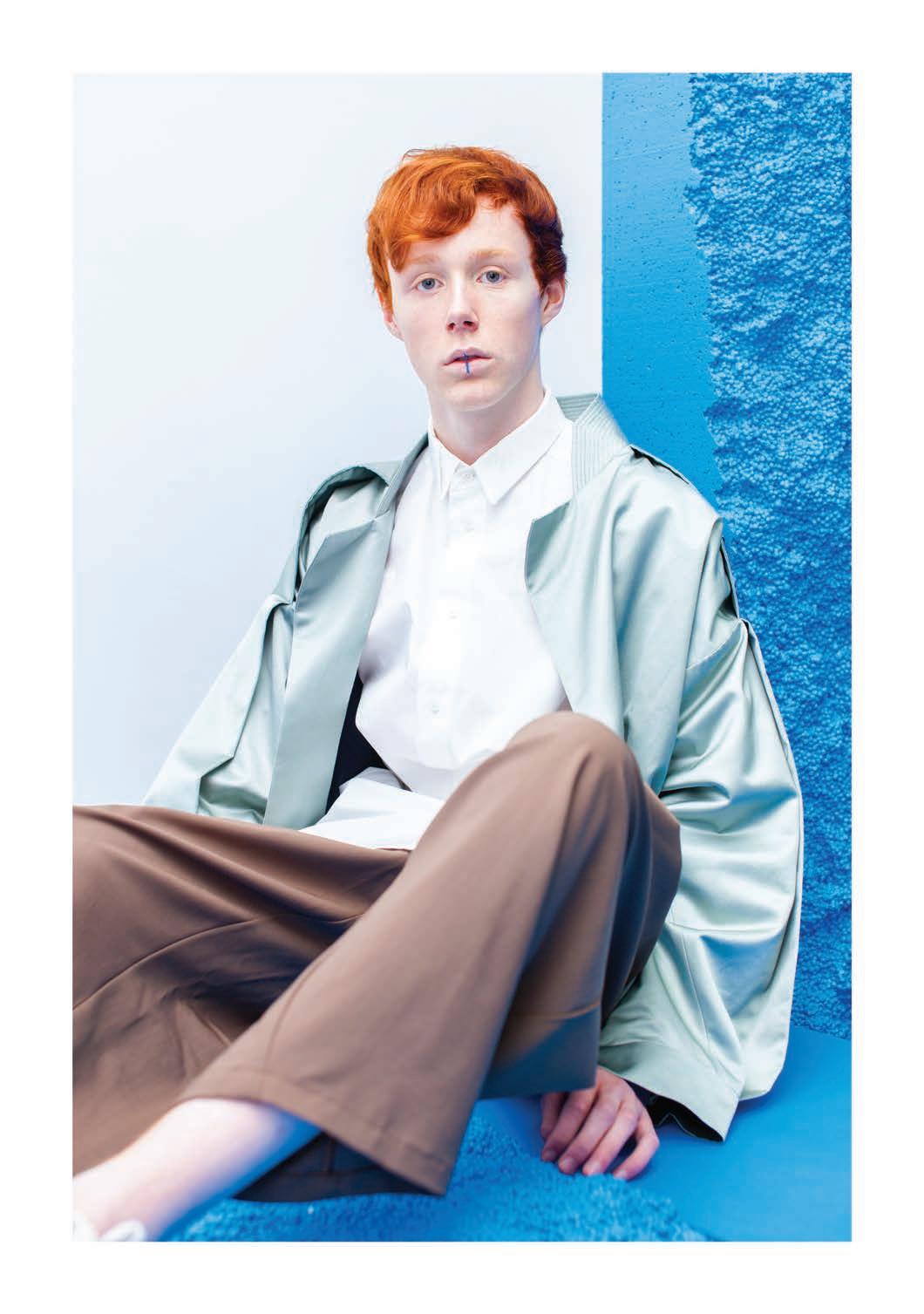


STREETS’ Colin Chapman interviews the House music legend
When considering about potential interview subjects for STREETS it was difficult to think of someone more appropriate than Honey Dijon for our change and transition launch issue. A house music DJ with bona fide roots in the origins of the genre, an insightful role model for the trans community, a close personal friend of some of the luminaries of fashion, Honey Dijon’s presence is a lens with which to filter the jigsaw of different subcultures we’re celebrating and exploring in this first issue of the magazine. And as someone who currently lives between London, Berlin and New York, she is eminently positioned to comment on the state of our urban subcultures and how they are changing. I caught up with her on an overcast afternoon in Hackney, while she was enjoying some downtime between worldwide DJ gigs.

So why are you in London right now?
I’m doing something with the Glastonbury people, an installation art thing at The Roundhouse tomorrow; it has to do with gender and performance. I did NYC Downlow at Glastonbury and it was really great, so they asked me to be a part of this. Friday I’m going to Munich, Saturday to Helsinki, and then back to Berlin, New York, Toronto, onto Chicago for a few days, then to Japan, then back to London to do something at Corsica Studios, and then Helsinki. I travel A LOT!
I live between New York, Berlin and London. I’ve been coming to London for a long time so I’ve had the opportunity to be part of the clubbing scene and the fashion scene here. It feels like home in a way, too. I’ve often found myself thrown into the centre of things because of house music, or just by being from New York City.
How do you find London these days?
What I find sad is all the laws which are trying to crack down on clubbing here, and the gentrification; it almost reminds me of New York, how the whole city is becoming so gentrified and expensive and it’s all about real estate and consumerism and there’s not a lot of room for artists to come and create; its more for people to come and consume. I think there are still spaces and a way in Berlin to be an artist, to be able to live and also create art.
I’m always inspired by London, I’ve always been inspired by London. Just the mix of people and cultures, the street style, all of that is really inspiring. There is a chicness and sophistication here. It’s still really raw in Berlin; it hasn’t matured to the level of other cities.
But that can be a good thing?
It is quite nice that you don’t feel the need to be anything; you can just be yourself. And I do like a bit of DIY, rough around the edges too but, they’re still into a very black, drapery sort of thing there and I like a little bit more chicness!
So how did you become a DJ? You grew up in Chicago, right?
I was born and raised in Chicago; I grew up there and spent most of my childhood and teen years there before I moved to New York City. That’s where I learned everything about house music, because I was there at the beginning. I was a kid, we used to get fake IDs and I used to sneak my way into clubs and I got to hear Ron Hardy and Frankie Knuckles and a lot of the pioneers of house music play. I went to The Music Box, I wasn’t old enough to go to The Power Plant or The Warehouse but he did another club after that called COD’s that I went to. I was really close to Derrick Carter, Green Velvet, DJ Sneak, Cajmere and Mark Farina; those people were my peers when I was growing up.
I know you are friends with Kim Jones, how did that come about? I discovered Kim through a store that used to be in Soho called The Pineal Eye. I was in town with Derrick [Carter] once for a gig at The End and we went shopping, we went to Black Market [Records] which was around the corner and we just stumbled into The Pineal Eye, which was where Pret A Manger is now in Soho, and we walked in and there were all these flyers. It was mind-blowing the research, things we’d never even really seen, like flyers that we knew existed and had never even seen. Who know about this stuff? And all the 12-inch records… it was mind-blowing! We were both thinking ‘who is this Kim Jones person?’ So that was our first introduction, and I remember thinking, ‘I have to know this person. This is just too close to home, unless you lived there and experienced it how do you know about it?’
And so, a couple of years later we had a mutual friend called Andre Walker, a designer in New York. Andre had started to collaborate with Kim and Kim happened to come to New York one time and I had told Andre about him and when he mentioned his friend Kim coming I was like, ‘is this the
Kim Jones?’
As soon as Kim and me met we bonded, it was like instant friends, he loves Chicago house music, and he’s obsessed with Paris is Burning and collecting magazines, like I will collect magazines.
His archives of English club designers: Leigh Bowery, Rachel Auburn, Bodymap, Westwood (the pirates collection); these were all things we had in common. It was just like meeting a soulmate, through mutual love of those things. I used to buy every issue of The Face and i-D and Blitz magazine.
And now you DJ for his menswear shows at Louis Vuitton?
I did the music since the beginning. It started off with me DJing the afterparties for his own collections, and then I did the music a couple of times for the shows.
What I really love about Kim is that he loves bringing those cultures into fashion; none of it is really separate for him.
For one Louis Vuitton show we used an edit of Love is the Message, a song from the Ballroom scene and Paris is Burning, he sort of brings all of these things together in a really smart, sophisticated and clever way and it all ties in.
So I’ve been working with him since he started his tenure with Louis Vuitton doing all the shows, afterparties and collaborating with people we both love, like it was amazing to meet Giorgio Moroder, one year he did an edit of all of his hits, from From Here to Eternity to I Feel Love and this year we worked with Nellee Hooper and we just worked with Nile Rodgers. Its just amazing to meet your idols, and have it combine with fashion and music and art. Kim is one of the few people I find in sort of a global luxury brand who brings all of these subcultures into his work. And I find that really interesting and not a lot of people do that. Its quite unique to what he does and especially for menswear, you’d think something like that would be for womenswear. Its really amazing what he does, even if I wasn’t his friend but just a person that loves culture and there’s very few artists in global luxury brands that do that. Everyone to me is using the same codes, safe familiar things.
Rick Owens is another one that brings a lot of subculture into his work, and I admire what he does, I have been able to become friends with him as well… just his shows using with women with different body shapes, and photographing his father and men over a certain age and sexualizing them and saying ‘this is sexy as well’, and worthy of love. I just find that really amazing
Do you have any other connections with the fashion world?
I’ve worked with Riccardo Tisci, I used to work with him quite a bit, he’s another one that sort of uses a diverse cast of models in his menswear when he shows.
I’m friends with Matthew Stone and we often have discussions about gender and race, and he says as a white person he feels its really weird to have to even have to have the discussion of diversity; ‘why should I be the one that says something is diverse when the world is diverse?’
This discussion of having diverse runways is coming from a very privileged space. That’s what I find the most unmodern about fashion; the conversation is so archaic. How can you be a modern brand and not have different shades on the runway? When you go to clubs, when you go to restaurants, it’s there. I don’t know who they are trying to sell this idea of monoculture to, it’s so absurd.
It seems with fashion we’re in this post World War Two dialogue; about how women dress, how men dress. I’m not really excited about aspiring to some all-white world.
I don’t find it modern at all. Even the idea of luxury for me has changed; I love well-made, handcrafted things but does that make it luxury? I love comfort, I like ease of travel, I like connecting with people of different life experiences. To me luxury is health; luxury is quality of food, quality of


housing, being able to surround yourself with nice things. I don’t know if its necessarily about being able to afford something, how can it be luxury when the same thing is available all over the world in the same shops? That’s not luxury to me, its like McDonalds!
Where is house music today?
It feels very hetero normative and white, I hardly see many people of colour, its not the way it used to be, I’m not sure if its because that’s the music that’s being made. It feels really separatist to me now. London still feels like it used to to me and when I do 718 Sessions in New York; that’s a child of The Paradise Garage and The Loft; you’ll see Japanese kids dancing next to 60-year-old black women, they still do the ritual of the baby powder on the floor. I don’t see that so much in festivals and clubs elsewhere. You see it a bit more in Berlin.
A friend of mine asked me to think about my purpose as a DJ and I really had to think about it. He said ‘for me it’s a place where I bring people from different walks of life together to socialize and celebrate that normally would not have the opportunity to do that’.
And so I really thought about that and I think maybe the way that certain music is played. When I say to certain people that I play house they think I mean techno, people are still confused about what house music is and they tend to get all these things blurred and confused, especially in fashion, anything with a hard kick 4/4 they think is techno.
House has evolved, it’s a new generation, its so funny now there’s a big ‘90s house resurgence and that’s their disco, house music is basically a descendant of disco and disco’s a descendent of R&B and R&B is a descendent of jazz… once you understand all these different lineages, the kids today are listening to Masters of Work, Lil Louis, Kerry Chandler the way I listened to Salsoul, Prelude and Western. It’s evolving, it’s changing but I don’t see as many hybrids as I used to; when things used to break off and come together. But I think it’s still vibrant, dance music itself is a global thing, its become really sort of mainstream, and its been corporatised now, with EDM and the corporatisation of dance culture. I don’t think house will ever die, there’ll always be purists, there’ll always be, its like jazz, there are jazz purists, there’s commercial jazz, it’s been 30 years, its not new any more. I still get as excited about it as the first time I heard it. I think the wonderful thing about being around for 30 years is that now I can combine my experience and my musical knowledge with what’s happening today and maybe that will create something new.
I just wish that there were more dancefloors where gay people and straight people and all kinds of people mix. It just seems that gay people go to gay clubs, straight people go to straight clubs, I miss that mixture. I think its still like that in New York and London and a few places in the world, if you’re bringing soulful house that brings a certain crowd, if you’re playing more minimal, more techno-y things that brings a different crowd, its really separatist.
There are very few DJs that have that range within a set, like a Danny Tenaglia that can play so many different styles and influences within one night and he’ll draw such a crowd of people that he can do that, or a Harvey.
There are very few of those… When Frankie Knuckles died the black gay DJ died for me, Derrick Carter’s still around, from that generation, he’s not even of Frankie’s generation really, that’s more Larry Levan and Frankie.. that’s gone, it’s done. Will we ever have that again? I don’t necessarily know if we need to have it again. Maybe we need to have something else? I’m not one for living in the past.
I think its great to have experienced it and take it for what it is and live now. One thing I hate is people saying ‘it’s not as good as when I used to go out’. Someone 20 now is probably having the best time of their lives! Now I feed off the fact that I experienced something that not a lot of people got to experience, now I feel like its my job to share what I’ve experienced, and I love exposing people to music, and maybe trying to
translate that as an emotion that they never would have experienced otherwise.
When I was growing up I used to have to go to little black gay clubs, like little hole in the walls, you just don’t have that any more, all the black gays are listening to hip hop, and pop and Beyoncé and Rihanna, and all the other gays are listening to Katy Perry. I don’t know what happened to gay culture where music taste changed so drastically. Sometimes I feel the music they’re playing in gay clubs is the same as for 16-year-old girls, this pop thing, I don’t get it.
Wasn’t there always an element of that?
There was Hi-NRG but there were other things too! You could find other things. You go to any gay bar they’re all playing the same soundtrack, they’re all holding up these pop women as icons. I just don’t connect with that, it’s not my thing.
Where is the best place to play?
Berghain Panorama Bar, no question. I feel really privileged to play a club like that where you can see a 60- year-old leather queen next to some blonde girl from Norway, next to some fashion kid next to some black guy; to me you need that mix.
How does it feel to live between three cities and to travel so much?
The only time I’m going somewhere new is when I’m heading to the airport and leaving for somewhere else, when I get there it’s the same, I can see the same 10 books in a bookstore in Berlin as here (indicating Broadway Market beyond the window), everybody dresses well, every body eats well. It’s all the same.
The problem that I feel with change and all this gentrification, is that these restaurants and great boutiques, is that it all looks the same to me, everyone has great taste, everyone is fashionable, that to me is not exciting, that does not bring about critical thought when everything is the same.
I remember having to come to London and getting things you could only get in London, you had to come to London to be part of it. Or you had to go to New York to feel like you were in New York. But I don’t feel that way any more, I feel that I can go to any city in the world and go to a nice café and have organic food and have WiFi.
The only time I feel that I’m in a different place is when I’m going to the airport. And I’m so conscious I’m getting on a plane to go to a different destination, but it reminds me of the Talking Heads song Road to Nowhere, cause I’m really not going anywhere.
Because you get there and it’s the same?
‘because I get there and it’s the same!
So I hear you’ve been recording music with Antony Hegarty?
I’ve known Antony for years, he used to come hear me DJ in New York, when he was still in the performance group Antony and the Black Lips. I’ve always been one of these people… I was so lucky; I moved to New York and got involved with the East Village downtown performance art scene. When I moved to New York I was thrown into the whole downtown scene, I’ve always been interested in it, as a kid I used to read Details and I used to read about The Mudd Club and Area and The Palladium and some of my favourite artists are Jean-Michel Basquiat and Keith Haring and Francesco Clemente. Like, my favourite time in history is New York 1976 to… 1998 (probably) when New York was such a different place, so just by being… queer, off-centre, I just wasn’t interested in anything hetero normative or conventional. I used to go see a lot of the East Village performances, and Lady Bunny at The Pyramid, Wigstock, all those sort of really great, colourful things and they were playing house music in those parties as well, along with a lot of other stuff. A lot of people don’t know

I feel really privileged to play a club like Berghain where you can see a 60year-old naked leather queen dancing next to some blonde girl from Norway, next to some fashion kid, you need that mix. “ “

that I listened to the B52s, The Cramps; I listened to all sorts of other shit.
But that’s part of the whole East Village culture though, right? That kind of slightly grungey…
Yeah, yeah! Its sort of what Berlin is in a way…
So, I met Antony and when he started to make his own music and split from The Black Lips he did this project… its so funny that all these worlds collide. He’s friends with Charles Atlas. Charles Atlas used to work with Leigh Bowery and Michael Clark, so it all ties together, do you see how my story is kind of all starting to tie together?
Absolutely!
With Antony, he did this project for his album called Turning, where he featured, he called them The 12 Beauties, and they were all trans women and he did video portraits to 12 different songs. And then we took that on tour, and we did that here in London at the Barbican in 2006, we did it at The Olympia in Paris, really famous venues around the world. So he’s always loved the music that I’ve done and then finally he did Hercules and Love Affair, Blind, Andy Butler was Derrick Carter’s boyfriend. I’ve known Andy Butler for many years. When I started making music I always said I wanted to make a song with him, and I finally sent him something and he wrote to it.
What are your plans for that? Is it coming out as a single?
We recorded it as a single; he’s using it for his album, and then I’m going to use it for a single. I’m excited about that.
When does that come out?
Who knows?! We’ve already recorded the song, we recorded it in May, and then he went on tour, so we’re just waiting till he’s in one place and I’m in one place.
As you know, this issue is all about change and transition. Do you think growing up as Honey Dijon today would be easier?
Yeah, sometimes I’m jealous that I’m not 20 now! [laughs] I mean jealous not in the way of what I’ve experienced but there’s a lot more visibility for people that are not… the whole trans discussion is literally… this was not even discussed when I was a kid.
And I just think now, with the Internet, which is basically only 10 years old, there is so much information and communities that you don’t have to feel like you’re alone or there’s something wrong with you, or there’s an isolation, there is so much more information and support than when I transitioned, or when I was coming about. I feel like I was misunderstood
by so many, I still feel like trans people have such a long way to go. we’re not really understood by hetero normative or homo normative cultures, people still get sexual orientation and gender identity completely mixed up.
I’m reading a book right now on feminism and gender and it talks about how no one’s really born a gender, we are all given these identities based on a hetero normative paradigm, and even things that aren’t hetero normative or based on hetero normative paradigms, so even if something diverts from that it’s still based on it.
It’s a reaction…
It’s a reaction and not for what it is itself.
A lot of gay culture is like that,
it’s a reaction but it’s still restrictive I feel, as trans people we still don’t have the space to just be, whatever that is, we’re just reacting against, trying to be. I’m speaking for myself and not others here because each story is different.
I don’t like the term ‘born in the wrong body’; there is no ‘wrong body’, you have a brain, you have a skeletal system, nervous system, to me when I think of a body I think of a functioning “body”, it’s what culture puts onto it that could be wrong or right. What it means to be a man and what it means to be a woman was decided by whom? Who made these definitions?
One of the things that saddens me about gay culture and what is happening to trans culture is instead of subscribing to these defined roles based on the gender you have been assigned by the genitals you were born with, certain body parts, or a certain region you come from or a certain person you love, is that it should just be what it is without having to be subscribed to something else.
Is there still an underground? Is there still subculture?
Probably! I think there are a lot of subcultures around the world; I just don’t have the time and patience to be on the Internet to find them! There’s already too much information as it is that I don’t feel I have the patience. I’m sure, there has to be! I’m sure there’s lots of things that I don’t know about, I’m resigned to the fact that I can’t know everything! There has to be subcultures and people move on. I mean trans people are for all intents and purposes a subculture, in a way; it’s redefining what it means to be a woman or a man, so I find that to be subculture.
Has it surprised you how visible that conversation is now? I find it really visible but I think that trans people still aren’t telling their own stories as much as hetero normative people telling us what trans people are, like you need to have this surgery or that surgery to be considered a woman or a man.
We’re just at the beginning of this revolution, it’s the very beginning, because most trans people, including myself, I’ve tried to fit into this hetero normative idea of what a beautiful woman is, based on what Western culture decides is beautiful, so I still think there’s a lot of room for self-defined definitions.
I think we’re just at the tip of what it is. I think in 100, 200 years you will see so many different gender expressions, of people with different body parts and ways of expressing themselves and their gender and hopefully there’ll be places for them.
We’re still living in the world where black people are still not accepted, so we have a long way to go in so many ways. We are still having this discussion on racism, 500 years after slavery, nothing’s changed. With all the violence against people of colour, its still the same, its amazing how we do have all this change and technology and travel and access to information but it seems that human change is still very slow. And
Oh, you’re transitioning? I’m like “and you’re not?” Everybody is, every fucking day.
compassion and acceptance and breaking down all of these sort of cultural paradigms that were created by whom? Religions, corporate cultures, these mental prisons that we still find ourselves in. We’re mobile but still primitive, its crazy.
Is the conversation around Caitlyn Jenner helping?
For some people. Her story is one of thousands, of millions. I think her story is just as valid as any other story, I just wish there was other voices heard. Every time I hear a trans story its of an older white man who decides this is how he’s felt all his life, but you very rarely hear about the 14-year old impoverished kid who gets on the subway every day and doesn’t have the financial means to transition so comfortably and yet still has the courage to get beat up by the world. And the threat of violence every day. Those stories are just as valid. I remember when I started my transition, it was violent. I was assaulted on trains.
Was this in New York?
This was in New York, in Paris, I was still DJing, my transition was very public in a way. It was very difficult. For trans people it takes so much to go through this journey but I don’t think it’s any different for women, or any different for gay people, everyone’s story is valid. I hate that there’s this qualifier of ‘whose struggle is the worst?’ Or when people say the gay movement is just the same as the black movement. Why is one qualified against the other? These are all different experiences for people who are just as truthful as yours but in a different way. It’s a human thing; everyone just wants to be who they are not based on someone else’s idea of what they should be.
I still thing we have a long way to go as far as change is concerned… Change is not comfortable
Where is Honey Dijon at today?
Berlin is a place that allows you to think. Its much slower, it’s not like here, its not a fast-paced hectic city, there’s space. You can delve into the madness or you can delve out of the madness, but it’s not all around, it’s quiet. It’s a place where you can decompress, especially after being in New York and London.
I’ve been trying to find my home because New York has changed and what I moved there for isn’t there any more, so I’m trying to find out where my next home is going to be…and I don’t know where it is yet.
That’s the funny thing about the word transition, when everyone’s like “Oh, you’re transitioning?” I’m like “and you’re not?” Everybody is, every fucking day.














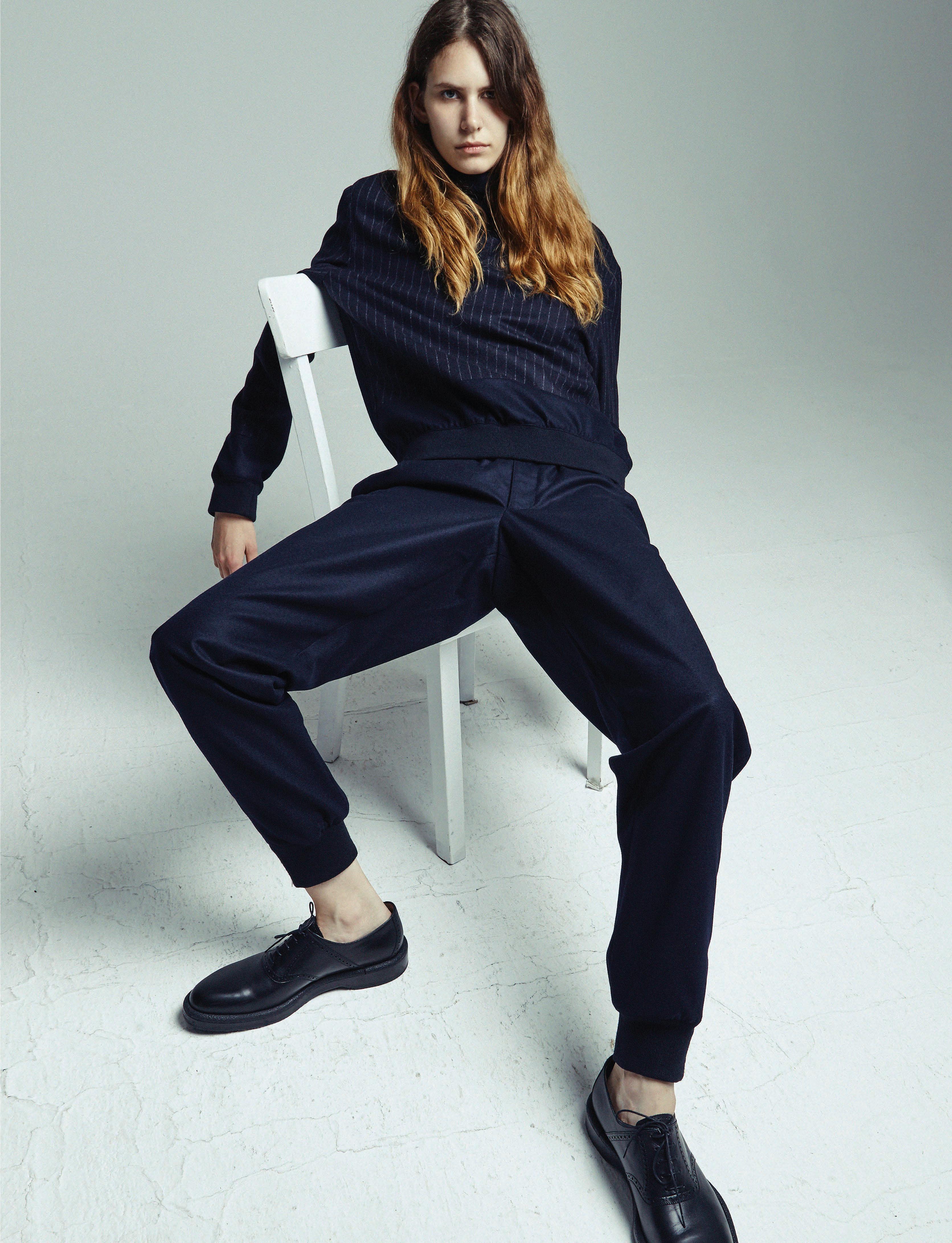

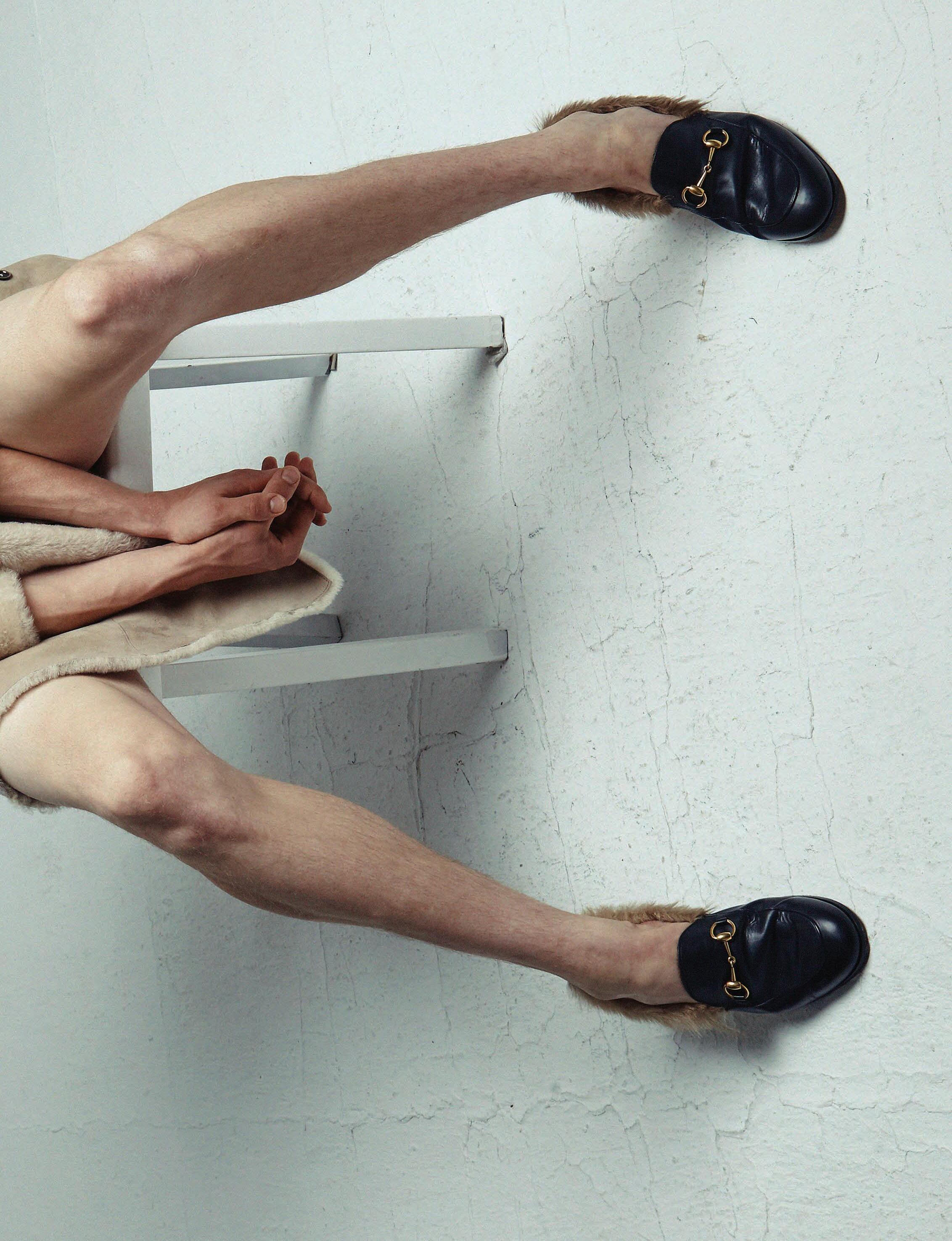



MILLINERS BERNSTOCK SPEIRS PROVIDE AN INDELIBLE LINK TO LONDON’S MUCH-REVERED ‘80S FASHION WORLD. AS MOVERS AND SHAKERS ON THE SCENE THEN AND NOW, THE PAIR HAVE CONSISTENTLY HATTED LONDON’S FASHION ELITE, WITH A MIX OF OF-THE-MOMENT AESTHETICS AND IRREVERENT HUMOUR.
You have been designing hats for many years now, do you have technique down pat or are there skills you want to learn or experiment with?
We have been designing hats since 1982, and designing a collection each season has obviously honed our skills and techniques, but it’s always a challenge to keep the hats looking fresh and new so we try to discover new fabrics or ways of using those materials.
As a partnership, how does the design process work? Are there particular aspects you each focus on?
Paul and I talk about ‘moods’ and ideas. This process is quite abstract and if anyone were listening they would think we were talking gobbledegook. Then we find the fabric and trimmings (which can also spark an idea). Then Paul, who is a brilliant maker, will go to the machine and come back with a first sample or a skeleton of an idea. If it looks good,
AS THE RECENT MCQUEEN EXHIBITION DEMONSTRATED, ACCESSORIES PLAY A PIVOTAL ROLE IN A DESIGNER’S OVERALL VISION FOR A COLLECTION. IN THE CASE OF MCQUEEN, WOULD HIS WORK HAVE HAD SUCH AN IMPACT WITHOUT THE INCREDIBLE CONTRIBUTIONS OF PHILIP TREACY AND SHAUN LEANE? THERE IS A REAL ARGUMENT THAT THE ACHIEVEMENTS OF SO-CALLED ACCESSORIES DESIGNERS SHOULD BE CELEBRATED IN THEIR OWN RIGHT. WITH THIS IN MIND, LONDON’S CURRENT FASHION SCENE IS BRIMFUL OF TALENTED ARTISANS CREATING ACCESSORIES FROM SHOE DESIGN TO MILLINERY AND EXQUISITE TEXTILES, AND YES, COLLABORATION WITH RUNWAY DESIGNERS IS COMMON. HERE STREETS CELEBRATES THE BEAUTIFUL OUTPUT OF ACCOMPLISHED DESIGNERS WHO DON’T ALWAYS GET A FARE SHARE OF THE LIMELIGHT AND TRACES SOME OF THE LINES BETWEEN LONDON’S MULTIGENERATIONAL FASHION FAMILY.


we will tweak it and discuss it some more until we have something that we think is right for us. For our men’s hats we work with a brilliant hat blocker in Luton. We have worked with Tom Llewellyn since 1982 and he is always willing to experiment and realise our ideas.
You’re a very popular choice for young London designers to collaborate with, how does that feel?
We love working with the young designers! Collaborations are an essential part of creativity… people spark off each other and the results can be very exciting.
How do those collaborations work? Do designers tend to have a clear brief for what they want or are you interpreting influences within the collection?
It depends on the designer. Often it starts with their idea of something and then it can change… It’s different every time.
Your shop is a landmark, what has been the chief impact of having your own retail space?
It’s brilliant to have direct contact with your customers and we have met some really interesting people. We enjoy having visitors; artist and designer friends pop by for a cup of tea and a gossip or to talk about ideas. We make hats in the same building, so it has a feeling of experimentation and industry.
This is our ‘change and transition’ issue, what changes do you notice in your own work? What is different about designing in the London of today?
When we began in 1982 there wasn’t a huge fashion industry in London. Fashion students would leave college and go to Paris, Milan or New York. Then, at around the time we left college, there was a surge of people who wanted to do things themselves, either in music, fashion or the arts. I don’t think many people had a business plan. Nowadays there is a proper fashion industry in London and people get sponsorship to do shows etc. The new wave of designers in this era has been exciting for us because has given us some great designers to collaborate with, like Peter Jensen and Kit Neale.
What are you offering for AW15? Are there particular hats or techniques you’re particularly proud of?
For our men’s collection we work with a brilliant hat blocker in Luton. We have worked with Tom Llewellyn since 1982 and he is always willing to experiment and realise our ideas. We wanted the Men’s hats to be quite serious, that is why we chose dark colours and the shapes, which are based on very traditional hats from the past.
SHOE DESIGNER DIEGO VANASSIBARA LANDED AT LC:M A FEW SEASONS AGO AND SINCE THEN VIA PRESENTATIONS EVOKING APOCALYPTIC STORMS AND THE AMAZON RAINFOREST, HAS EXPRESSED HIS VISION OF MEN’S FOOTWEAR WITH RARE FLUENCY. AT THE LAST LC:M, VOGUE’S SARAH MOWER WAS HEARD TO SAY HOW DELIGHTED SHE WAS TO SEE VANASSIBARA AS A SHOE DESIGNER BEING A RECIPIENT OF THE NEWGEN FUNDING INITIATIVE THAT SUPPORTS YOUNG MENSWEAR DESIGNERS IN LONDON. WITH FANS IN SUCH HIGH PLACE IT CAN’T BE LONG BEFORE THE NAME VANASSIBARA IS AS SYNONYMOUS WITH FINE SHOES AS BLAHNIK. GO DIEGO!
There’s a real aspect of artisanship and craft in your shoes, what techniques and details did you use in particular for your AW15 collection?
The AW15 collection has a very modern take on the use of materials and cut to interpret ideas such as surgical incisions, the shrill sounds from a storm or experimental music, the reflection of lightning on surfaces etc. These concepts were translated in different ways. For example, one of them was to work with crisp raw edges cut by hand in beautiful angular lines to create a powerful silhouette. All that hand cutting requires an immense amount of concentration and practice from the person who is performing the task, which is a form of artisanship. Of course I kept in some styles my trademark hand-carved mahogany and rosewood accents, sometimes presented only as treated bare wood and sometimes hand lacquered for the piano-like finish. Other successful techniques were loop-like decorative hand stitches on the upper and hand embroidery using tiny silver cylindrical beads along the vamp, that look like drops of rain being caught under the flashes from a lightning strike.
What did you set out to achieve in particular with your AW15 collection?
It wasn’t my main objective, but I would like to say that I was eager to challenge some persistent misconceptions that we were a label of brogues and ‘classics’. I wanted to offer a convincing proposition that reflects our modern aesthetic infused with a contemporary approach to craftsmanship, which leads to what I call “modern artisanship”. About the story behind the collection per se, it was an unexpected blend of ideas involving a mega storm worthy of a tornado, early synth music and Vienna, all happening at the same time and in harmony. It’s a bit like me: a mix of contrasting views, concepts and beliefs that, somehow, manage to live in peace together.
Are there new forms of artisanship you are looking to experiment with?
Certainly, because that’s what we do, but expressed
Aerts
by: Sophia


in the form of footwear. At the time of this interview our SS16 collection is already being produced. It’s a collection that outstrips the idea of what artisanship in shoes can normally be. I’m always researching and investigating new ideas that can be incorporated into our designs. It fuels my craving for creating.
I can say from personal experience that your shoes are very comfortable to wear, how do you engineer this? Is it about the materials or understanding the anatomy of the foot (or both)? Both, but as a basic rule is to understand that if your feet support your bodyweight, then your shoes must support the body and the feet, also allowing for the natural transformations that occur to our body during the day. Although those changes in the body might be small, they count a lot because in footwear we work in millimetres. That extra millimetre here and there in a shoe makes the whole difference. And, don’t underestimate the value of having your shoes lined in super supple calfskin, like ours!
Where is your best market? Where in particular do people understand what you’re doing?
The Orient. I don’t know if there is a Buddhist mantra that preaches in favour of great shoes, but there the discerning men seem to appreciate decent shoes a lot. They are very appreciative of artisanship, of handmade goods and special materials. Their history evidences that. They let plastic be used only making electronic goods.
Your inspirations are very diverse; from storms to the Amazon rainforest. How do you keep track of your inspirations? Do you keep a sketchpad or a notebook? Or is it more digital?
To be honest I keep only a small archive file where I keep some papers with ideas on them, but I’m stubborn and mostly trust my memory. Usually I suffer from an inner attack of ideas for the “next” collection when I’m still designing the current one. However, that doesn’t disturb me at all!
This is our ‘change and transition’ issue, what changes do you notice in your own work? What are the biggest transformations to date? I see that my designs have evolved to be more in tune with the needs of my clients. I want to make the difference to their benefit and not to the benefit of my own ego. I think also that I’m now more confident to express my Brazilian roots more deliberately by adding more spice and fun into my work. Something tells me that the influences I bring with me from Brazil mixed with the ones from the UK, where I’ve lived for 10 years, can produce a rather nice combination.





BECKY FRENCH’S MARWOOD LABEL IS RENOWNED FOR PRODUCING ACCESSORIES OF RARE CRAFTSMANSHIP AND BEAUTY. THROUGH HER COLLABORATIONS WITH BRITISH CRAFTSPEOPLE AND FINE ARTISTS HER WORK REACHES NEW HEIGHTS OF ARTISTRY. IN FRENCH’S HANDS THE TIE HAS BECOME AN OBJECT OF LUXURY BEYOND THE OFFICE STAPLE, AS CELEBRITY FANS SUCH AS RICHARD AYOADE CAN ATTEST TO, AND THE RANGE HAS EXPANDED TO INCLUDES SCARVES, BRACES, GLOVES AND SOCKS, ALL WITH A SIGNATURE TOUCH OF THOUGHTFUL ELEGANCE.
What was the overall story for your AW15 collection? What did you set out to achieve?
British folk art and paintings by Klee inspired the colour palette. Each season the aim is to explore traditional techniques and apply them to woven accessories to offer something unique within the menswear market. Colour and texture are prominent signatures of Marwood products and hopefully we push this each season to offer something new. I wanted to grow our scarf offer as well and look at shape as well as fabric. We are launching a quilted appliqué scarf in September and a graphic woven style that will be sold on Mr Porter.
There’s so much craftsmanship in your work. Tell me about the techniques and details you used in particular for your AW15 collection?
I looked at the Tate’s British folk art exhibition as a kickstarter and took inspiration from the techniques and embroideries that were used. Working with an in-house embroiderer we explored different stitches and these sampler pieces ended up being more interesting, so became the final artwork. I also deconstructed our classic English lace to make appliqué patches hand stitched on to the ties. It was a satisfying process to put every inch of the lace cloth to use. We continued to work with our Suffolk based silk mill as well as their capabilities and weaves develop continuously.
Are there new forms of artisanship you are looking to experiment with?
So many. Collaborating with graphic artist Sam Kerr last year and screen-printing his tessellating leaf artwork on to lace was quite an experimental printing process and had successful results. I want to learn about new printing and dyeing processes alongside weaving in the immediate future. Long term I would really like to do furniture again, as our collaboration with Molteni and Gio Ponti last year was so much fun to
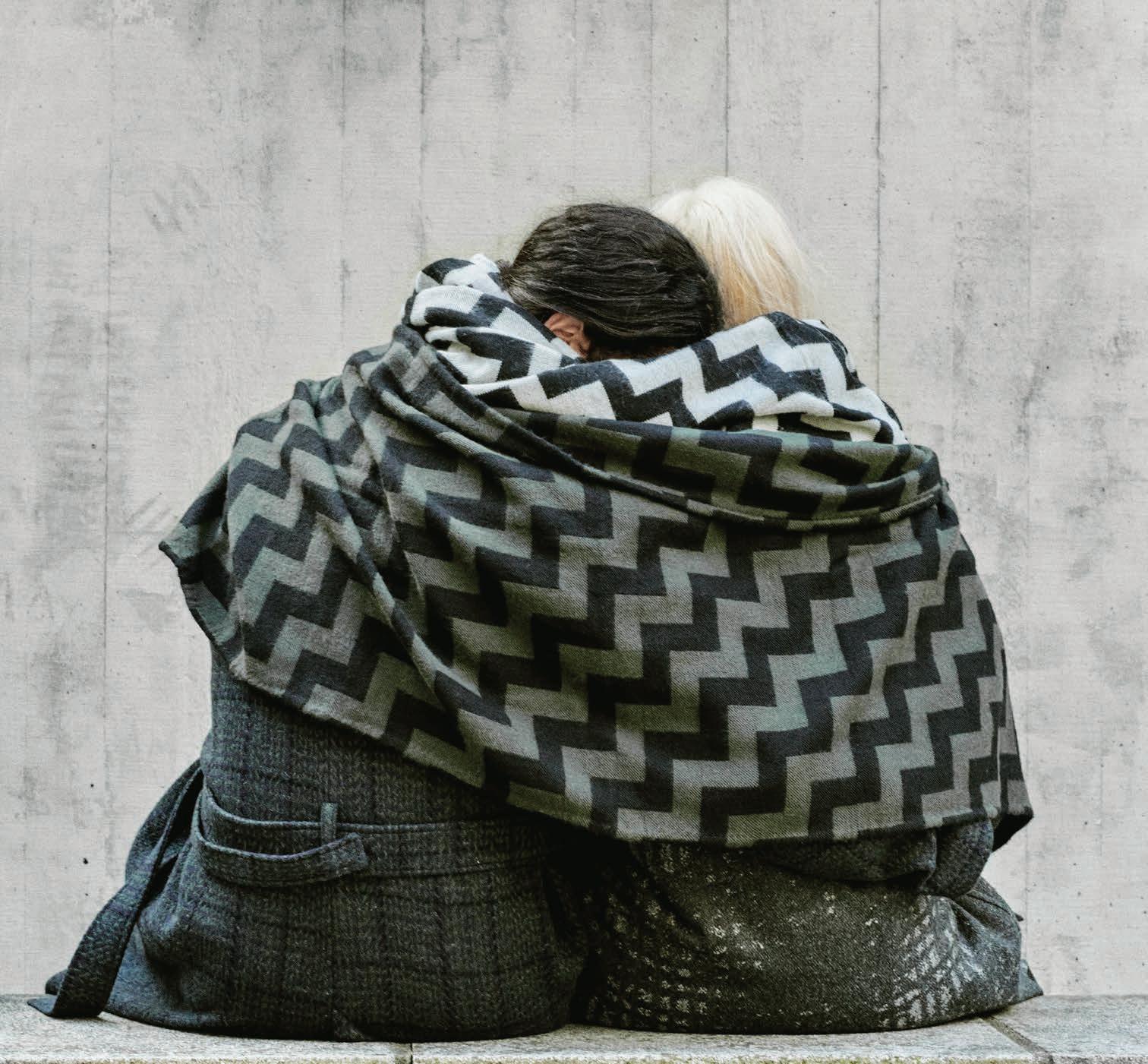
work on.
Your lookbooks are always remarkable, what was the story for your AW15 shoot?
I really enjoyed this shoot, the second one working with photographer Arianna Lago. Ari shoots on film and digital and her sense of colour is pretty stimulating. Her work reminds me of a blend of Nan Goldin and Mark Borthwick. Ari led the concept when she saw the collection and wanted to contrast the colour and soft textures with a brutalist British backdrop. I am also drawn to communities and how they come about. Craft has and continues to pull people together, creating close-knit communities and Neave Brown›s architecture design of the Alexandra Estate has a similar impact.
You’re no longer based in London; do you think this change in location has affected how you design?
The design process hasn’t changed really. Marwood started from a corner of a shared studio in London and that set me up for sharing and collaborating ideas, which continues to inspire me. It is easy to work from anywhere now and I’m enjoying the new surroundings. The exciting changes are that we have more space and the warehouse and studio are all together. It works well as a team.
The contrast of being based between Devon and London has been all positive so far. Living on the coast is pretty unbeatable for me.
Your inspirations are very diverse. How do you keep track of them? Do you keep a sketchpad or notebook? Or is it more digital?
A mixture of both. I archive swatches, photos, each collection of ties and lots of boxes of fabric as well as sketches. Books remind me of what I was inspired by and I collect them along the way.
This is our ‘change and transition’ issue, what changes do you notice in your own work? What are the biggest transformations to date?
It’s hard to comment on changes in my design work, as I am too close to it to notice. Everything always moves on and style evolves. I always feel re-energised by change in general though. It’s exciting and keeps things interesting for me. In terms of transformation, Marwood has evolved from an idea in my head to a running business and I have an incredible team that are integral to Marwood’s success. It’s a lot better than doing it on my own!
SION AND TIFFANY HARGRAVES-PHILLIPS
JEWELLERY DESIGNERS TIFFANY AND SION HARGRAVES-PHILLIPS DON’T HAVE TO WORRY ABOUT TAKING THEIR WORK HOME WITH THEM, AS A HUSBAND AND WIFE TEAM THEIR WORLDS ARE INEXTRICABLY LINKED. TOGETHER, THEIR COMBINED HISTORY HAS CREATED A MOMENTUM THAT HAS MADE URIBE JEWELLERY THE JEWELLERY BRAND OF NOTE (AS A CASUAL EXAMPLE, KARL LAGERFELD WORE THEIR STERLING PIECE TO THE APPLE I-WATCH LAUNCH AT COLETTE IN PARIS).
What brought you to jewellery making? Was it a lifelong fascination?
Jewellery has always been a fascination, however wasn’t necessarily something either of us thought we would do for a living. Tif ended up in accessories and jewellery design by accident really! After studying and working in ready to wear, she was offered a job at Chanel with the head of accessories design and it became a real focus from that point on. Sion on the contrary, had no experience in jewellery and only had approached the fashion business through branding and advertising so it has been an entirely new experience for him.
Are there specific techniques or pieces in your current collection you are especially proud of?
We always work with our signature U closure that is found in most necklaces. In the process of our development as a brand, we really focused on making something unique that sets us apart and speaks of our branding (like the Chanel Mademoiselle closure, Tiffany’s T Bar and so on).
It’s particular to us and we try to repeat its shape throughout the structure of each collection.
As a partnership, how does the design process work? Are there specific aspects you each focus on?
Our starting point is developed mainly in conversation together and with a shared mood board. We aim to research for around a month’s time and then we refine the research fine combing and sieving through the unnecessary. From the moment we have established a concept we are both sure of, we then work separately. Tif will draw the collection and source material while I (Sion) work on the visuals, campaign and branding of the collection. It’s a partnership all the way from the design process to the business and administrative work, and of course life too as we are married.
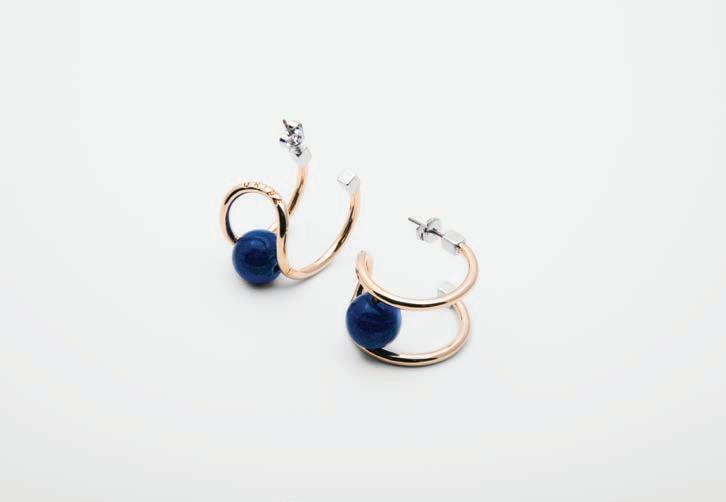



Do you collaborate with other designers or is this something you would like to get involved in in the future?
We would love to collaborate with other designers, as collaboration is key in our process. Like with our campaigns, we collaborate with our friends who are really talented and up for a fun project (Dave Lane, Luke Evans, Laurence Owen, Alex Franco, Bella Howard). So moving forward into design and product collaborations with other designers, as a brand, is definitely on the horizon – we are so up for this!
This is our ‘change and transition’ issue, what changes do you notice in your own work?
What have been the greatest transformations to date?
Mainly we can see a change in our confidence; having your own business teaches you a lot. The first collection was a leap into the dark in a way, we have made mistakes and we have learned how to correct them, all the while becoming more confident about what we do and how we talk about it and approach our customers, and most importantly, trusting our instinct. Learning to do that was probably the most difficult task! Believing in what you are making and creating is a powerful tool, we are lucky we have each other to support thoughts and ideas and motives to move forward as a brand.
The greatest transformations to date have really been how we structure the business. URIBE is growing fast and we are constantly aiming to keep it in that upward direction; to stay on top of things while it is transforming so rapidly is the biggest challenge but more exciting than anything we’ve ever done.
How does being in London impact on what you do?
London is really diverse in culture, art, ethnicity thus we breathe it in every day! It has a definite impact on our work and inspiration especially all the galleries and museums’ open doors, having access to the most amazing shows before the rest of the world. London always seems to get it first. When we start our creative process we pay attention to anything and everything we like at the moment, colours, music, food, films – and the majority is because of what we are doing in London at the time. We try to spend our free time (when we have it!) walking around London’s diverse neighbourhoods and soaking it all in.
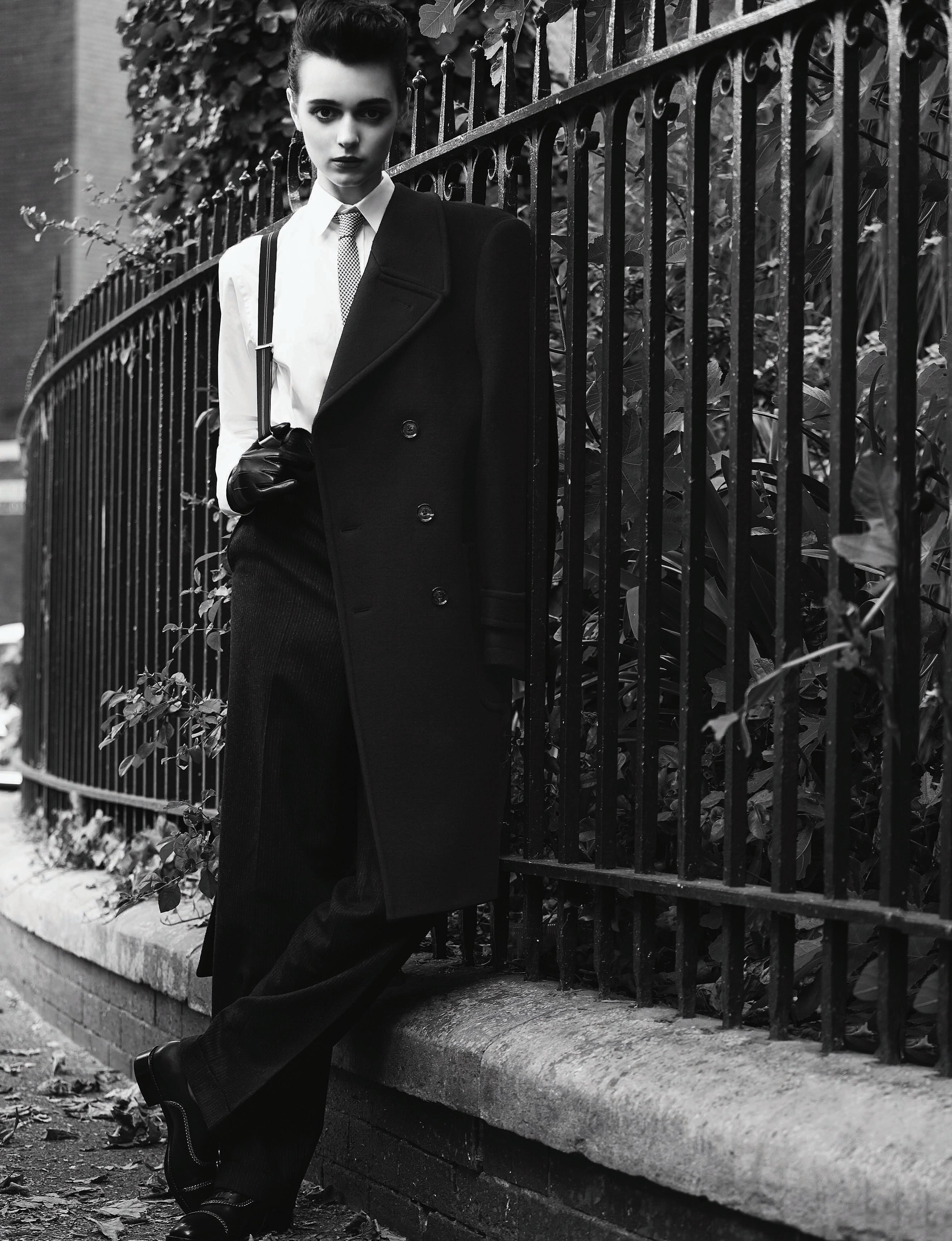


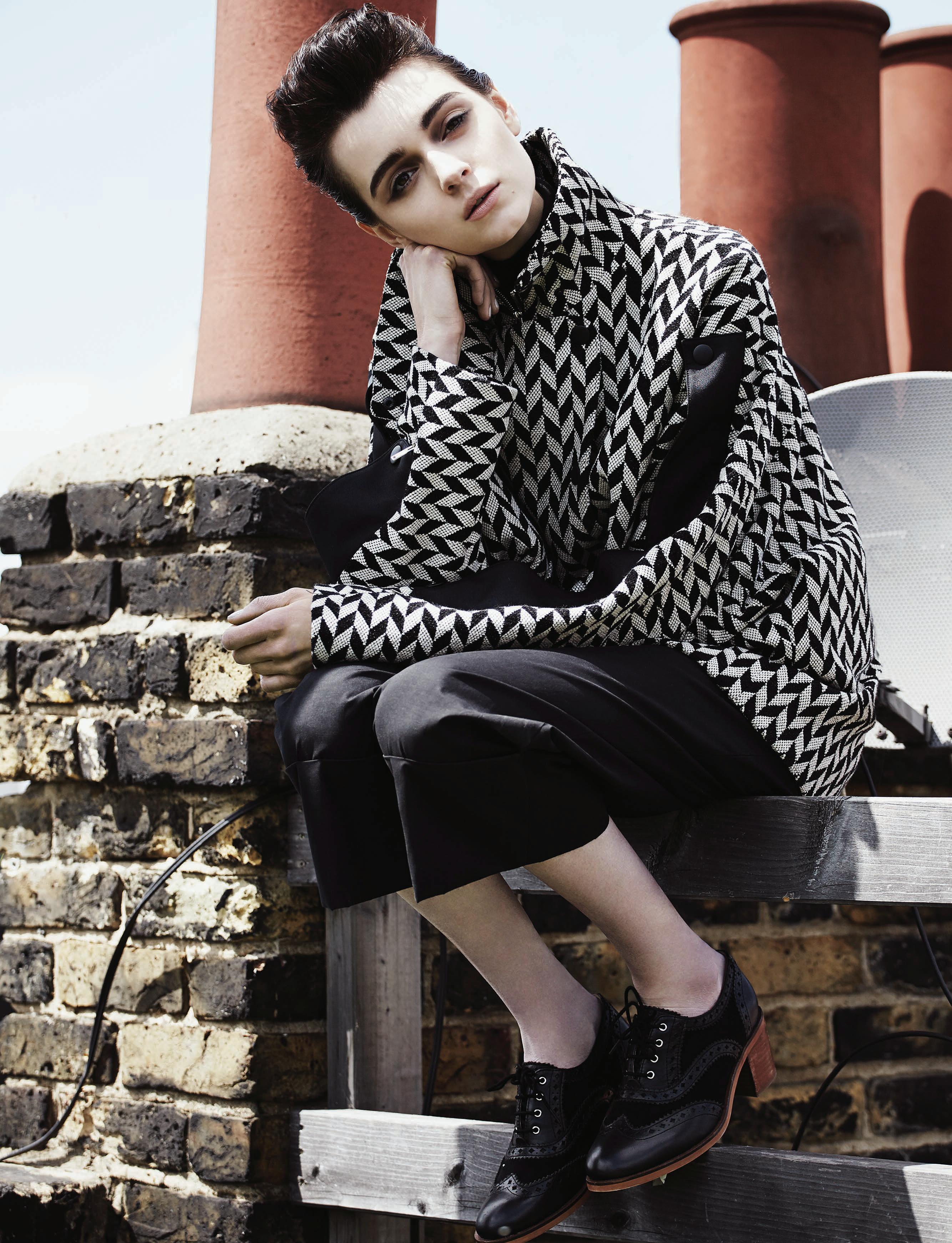

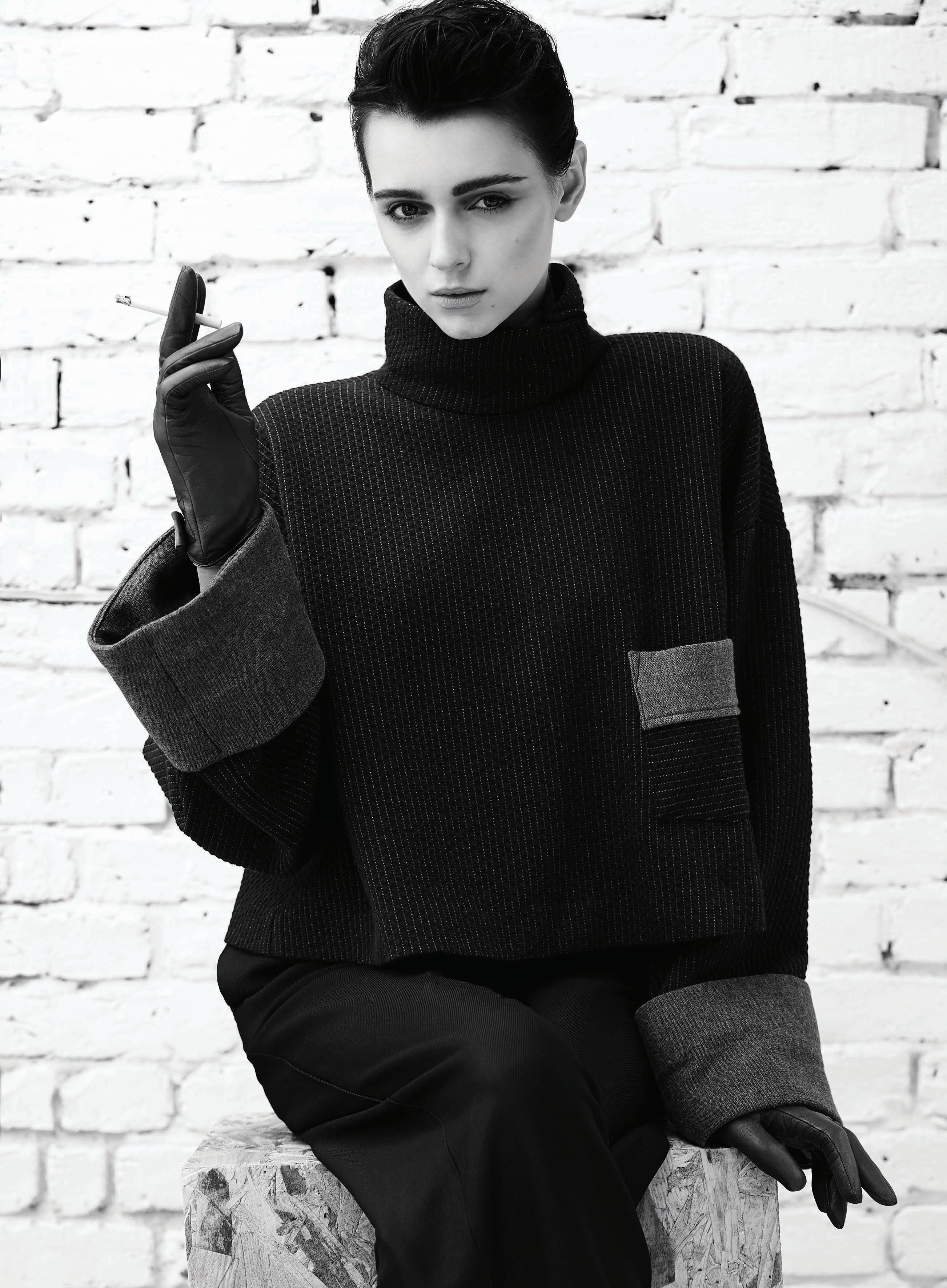






USING BUMBLE AND BUMBLE
MAKE UP: MARIA COMPARETTO USING GIORGIO ARMANI COSMETICS

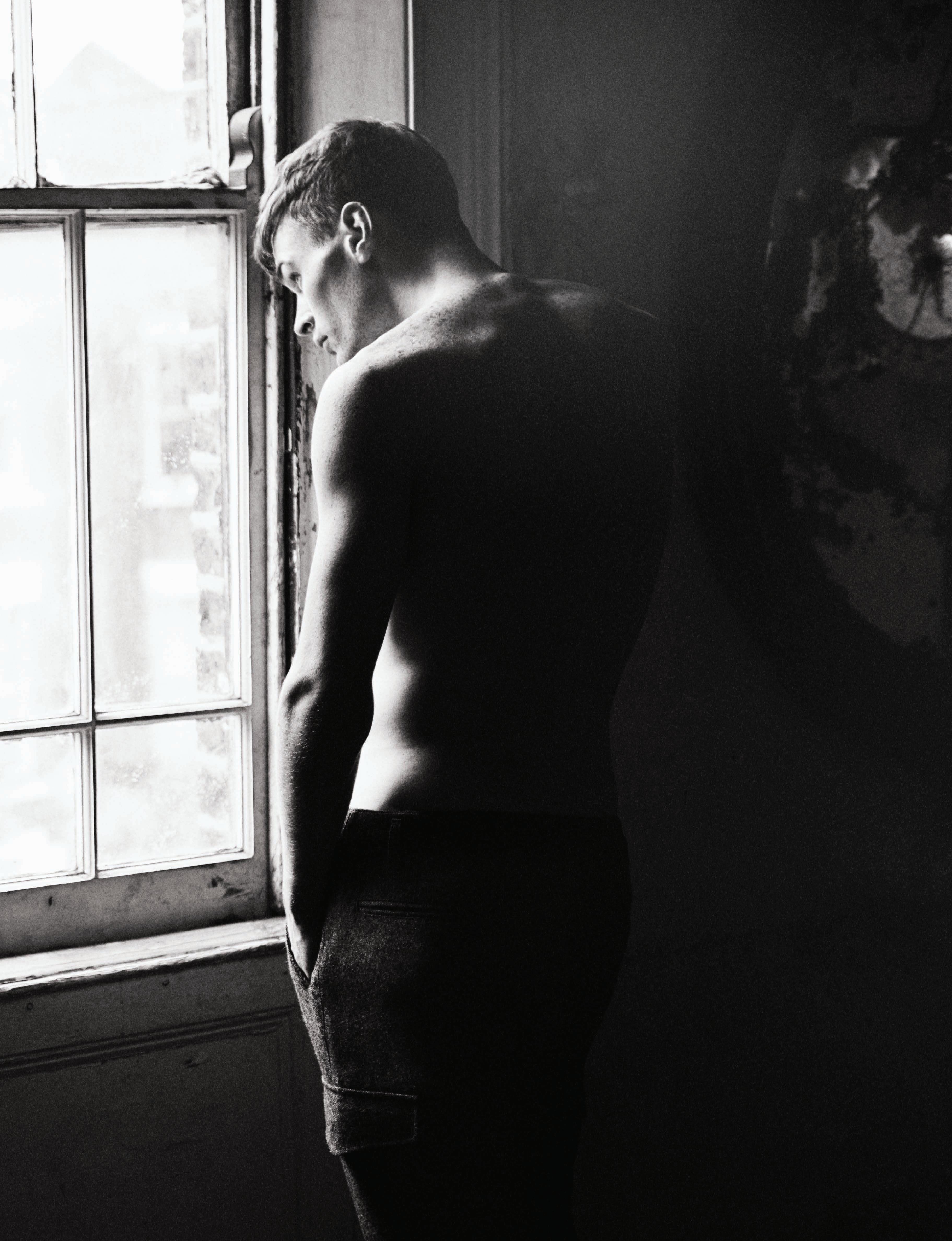






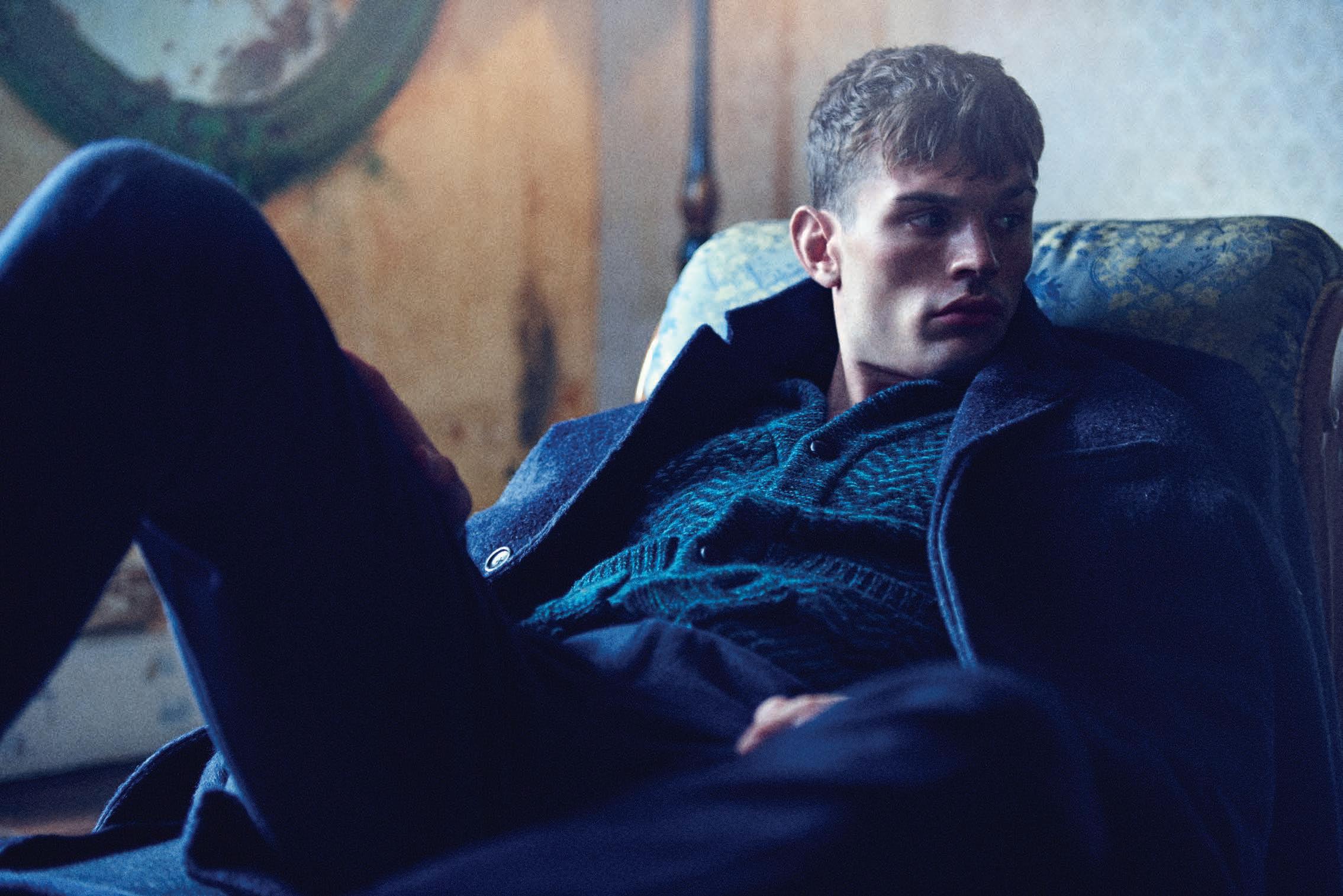




I’LL
WORDS: COLIN CHAPMAN
In July, New York held its inaugural fashion week for men. Clearly inspired by the success of London Collections: Men, there was something familiar about the three stage set-up and the buzzing media hub on Washington Street, not least many of the faces of those attending. Despite rampant gentrification, New York City exists in the world’s imagination as a style leader, unapologetically metropolitan, ultra fast paced and never camera shy. So why did it take so long for the City to get it’s own menswear showcase? Previously, NY menswear shows were illiberally sprinkled across the main womenswear schedule, a challenge in timing for those of us nonAmerican menswear journalists attending. But after successful lobbying by the likes of Bruce Pask, [a former fashion director at T magazine now at Bergdorf Goodmans], a regular at London Collections: Men who clearly soaked up every ounce of inspiration and atmosphere and wanted to take it home, New York Fashion Week: Men’s was born.
New York has a fearsome fashion industry. Employing huge numbers of people, in all aspects, from manufacturing to PR to in-your-face retail, attending midtown shows you were reminded of its historic Garment District status, and at presentations like the Calvin Klein collection it felt very much like you were at the heart of a big machine.
But it wasn’t all industry heavyweights, genius planning saw the initial day divided into two halves, both showcasing fresh talent. While some have griped that there wasn’t enough of this emerging talent on show during the week as a whole, I have to say that I went home with as many contacts and business cards in my notebook as I might expect to in London.
Par exemplar, was Jackson McKeehan, a recent graduate who supports his nascent label, Boyswear, by working in Brooklyn real estate. Jackson’s point of view sums up the reality of launching a fashion career in the City: “so many emerging designers here have to stop due to lack of funds. I don’t think I’m special in that regard, but it does make me want to fight for it,” he explained. Jackson’s collection, hilariously titled The Manson Family Singers, featured bespoke prints in folksy Bohemian shapes inspired by Tyrolean costume. Other emerging designers who impressed were Ryu Hayama whose Fingers Crossed collection, inspired by sunsets, spanned an entire colour spectrum, and whose outlines defined the loose skateinspired shapes of next summer and Carlos Campos’ tropical tailoring, an homage to his native Honduras.
More established designers like Tim Coppens and Robert Geller clearly had their game faces on for the new menswear week.
No attention to detail was spared at Geller’s show from the weathered boardwalk runway setting the scene squarely by the seashore, to the

personalised notepads on the seats and accessories from open-toe socks and special edition sandals to knitted cummerbunds. Colour spectrums and sunset-inspired colours were seen elsewhere during the week, but Geller’s fading sun tones were of a softer, more Nordic variety; inevitably including the greys and subtle purples of Northern skies.
Elsewhere, Alexandre Plokhov’s show lived up to his theatrical, more goth than Gotham City reputation, as the throbbing soundtrack, bloodred lighting and dry ice established a thrilling atmosphere in the opening moments of his runway show. Starting inevitably with all-black looks, the luxury tailored sportswear was eventually diversified into navy, red and even lemon yellow. The way the slim cut of his elegant tailored sportswear fits the body was utterly contemporary.
Tim Coppens’ European take on classic American leisurewear meanwhile, evoked the rhythm of the City’s streets without missing a beat. Details were always worthy of attention but never detracted from the whole. A case in point being the beading details lifting classic Van’s to high-fashion, the graffiti art inspired prints and riffs on classic Americana such as varsity jackets (complete with TC lettering) in unexpected colourways and fabrics. On the new week for menswear, Coppens commented: “New York is big enough to make a statement. There is something about the City, which is why I choose to live here, and is very important to my brand. After all, Helmut Lang chose to show here too…”
As Coppens highlighted, alongside residents there are also designers who actively choose to show in the City, like N. Hoolywood’s Daisuke Obana. Given that typographic pioneers inspired it, the Japanese designer’s collection could have been fully loaded with print, but as ever, there was careful restraint in Obana’s approach to his subject. Where lettering did appear, it’s effect was subtle, and the pared back space on West 31st street provided a perfect backdrop for monochrome urban looks, given added attitude by the street-cast models.
Duckie Brown have a special place in New York menswear, part outsiders (one Brit one Canadian) they are at the same time an integral part of the fashion scene, defiantly taking a very European approach to men’s fashion in a country that prefers to send its avant garde to show in Paris (think Thom Browne and Rick Owens).
Having long been a voice for independent menswear in New York, this was a moment for Duckie Brown, and they didn’t fail to dazzle with the sheer beauty and artistry of what they can create with cut, pattern and cloth. Backstage, Steven Cox shrugged off praise by declaring the creations to be “just jeans and T-shirts”, emphasising the simplicity of the shapes we’d just seen, but given the materials involved, the results were anything but pedestrian. Gauze T-shirts, flowing trousers extravagantly gathered at the waist and oversized suiting in yet more wafting materials, most strikingly in a vivid, Chartreuse yellow, provided one of the most bewitching collections of NYFW: Men’s.
Ultimately, New York is too important culturally and to the world’s fashion story as a whole, to not have its own menswear week, and while it may take a while to finely tune the balance right between emerging talent and some of its native powerhouses, it has the advantage of having observed London Collections: Men’s teething pains from afar. While the European cities like Paris and Milan have the haute traditions and grandiose settings, something about the urgent energy of Manhattan, even in gentrification beleaguered times, makes it an ideal location for showcasing fashion. Perhaps this was best symbolised by the regular presence of Bill Cunningham, the City’s legendary blue-jacketed photographer, who was visibly there to endorse the week’s proceedings on Washington Street.
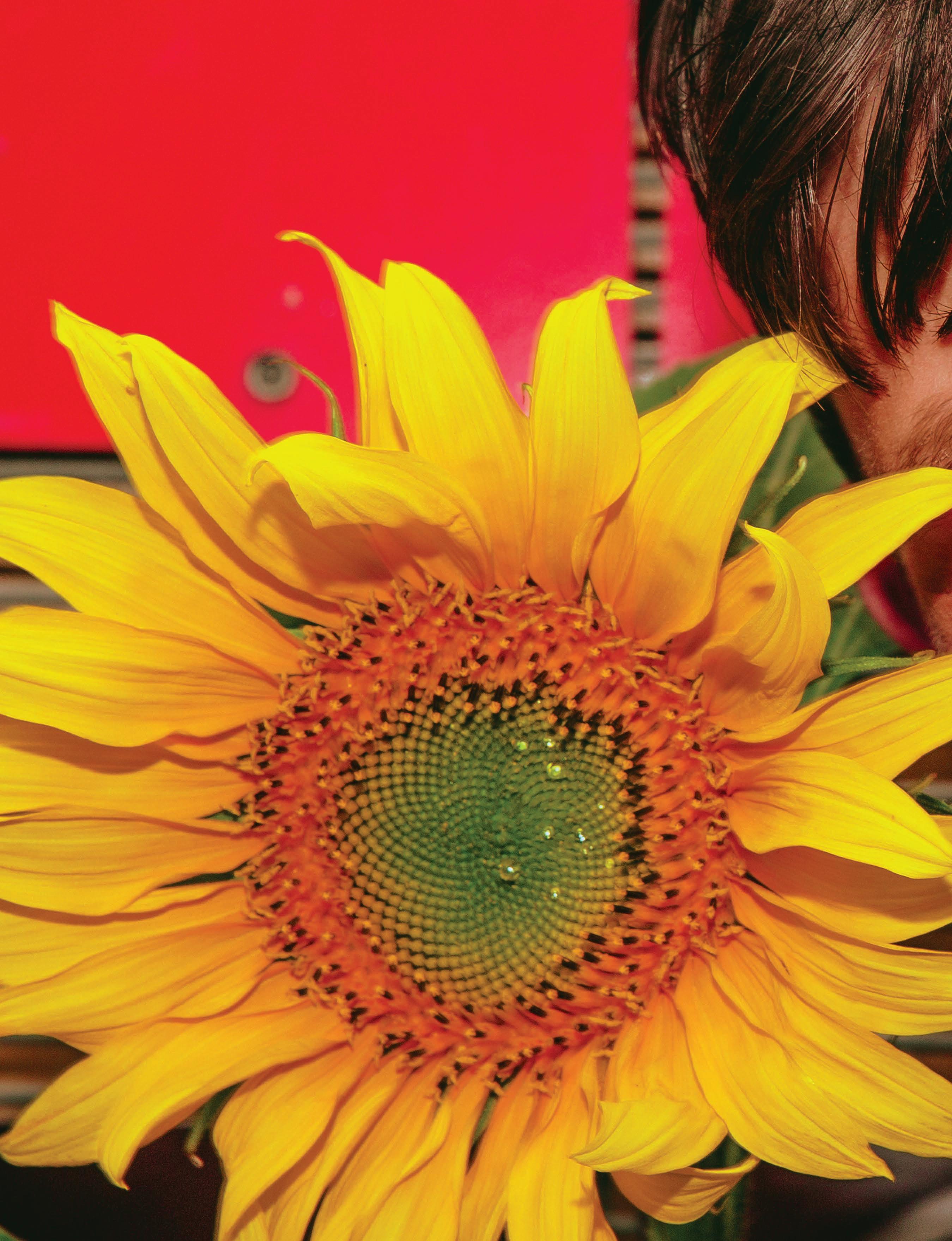
















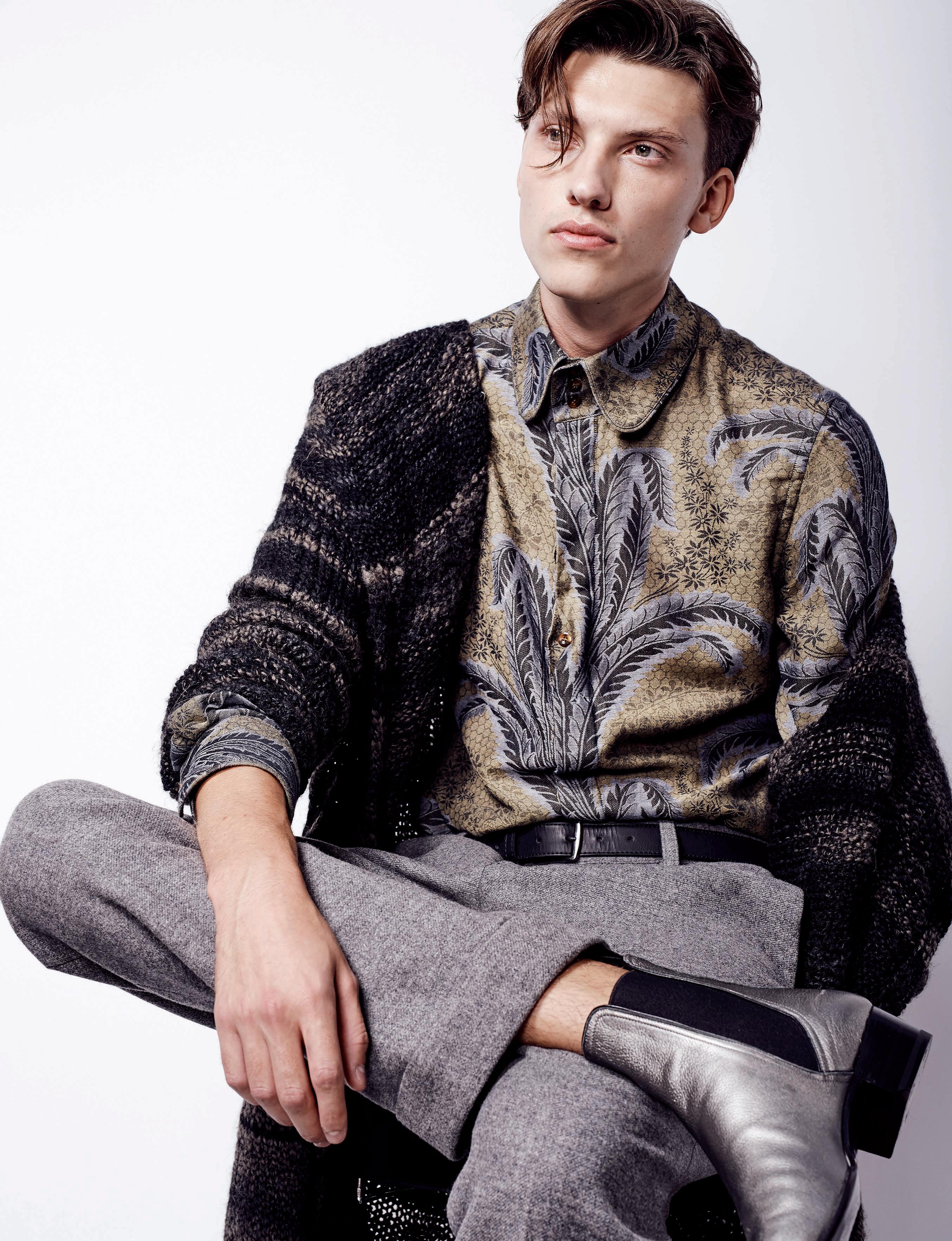
















& shoes:

photographer: DAMIEN FRY
fashion editor: KRISTOFJ VON STRASS



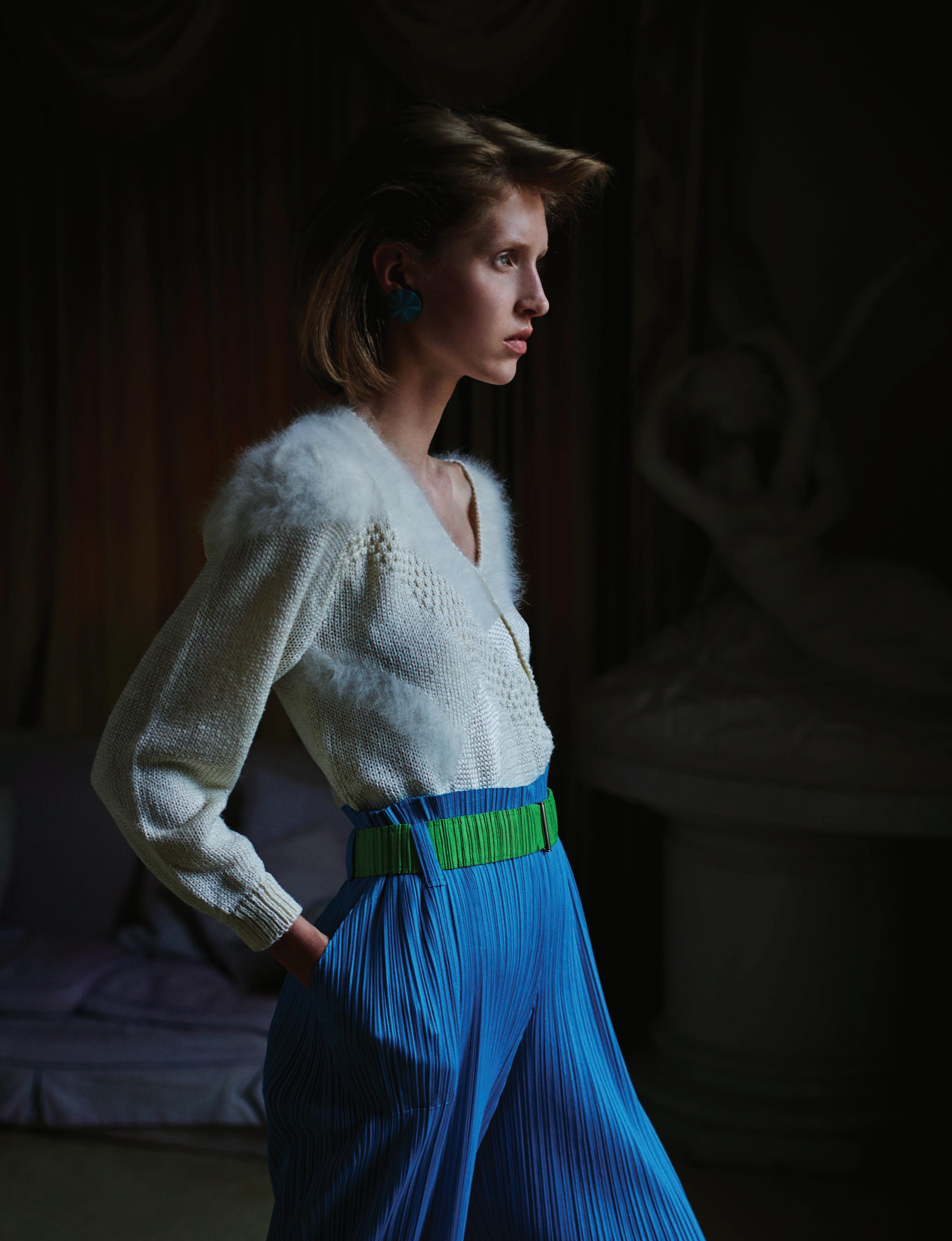

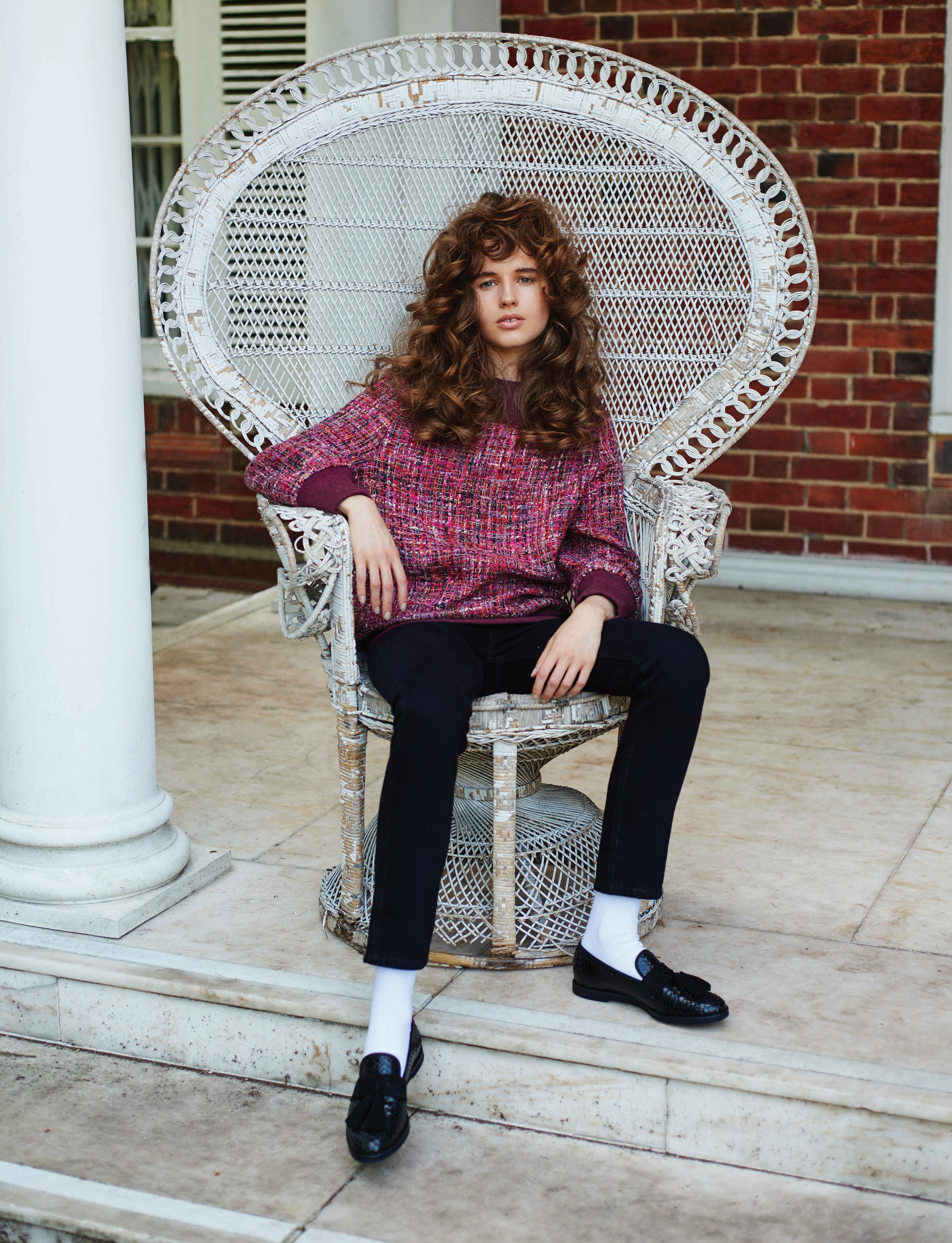

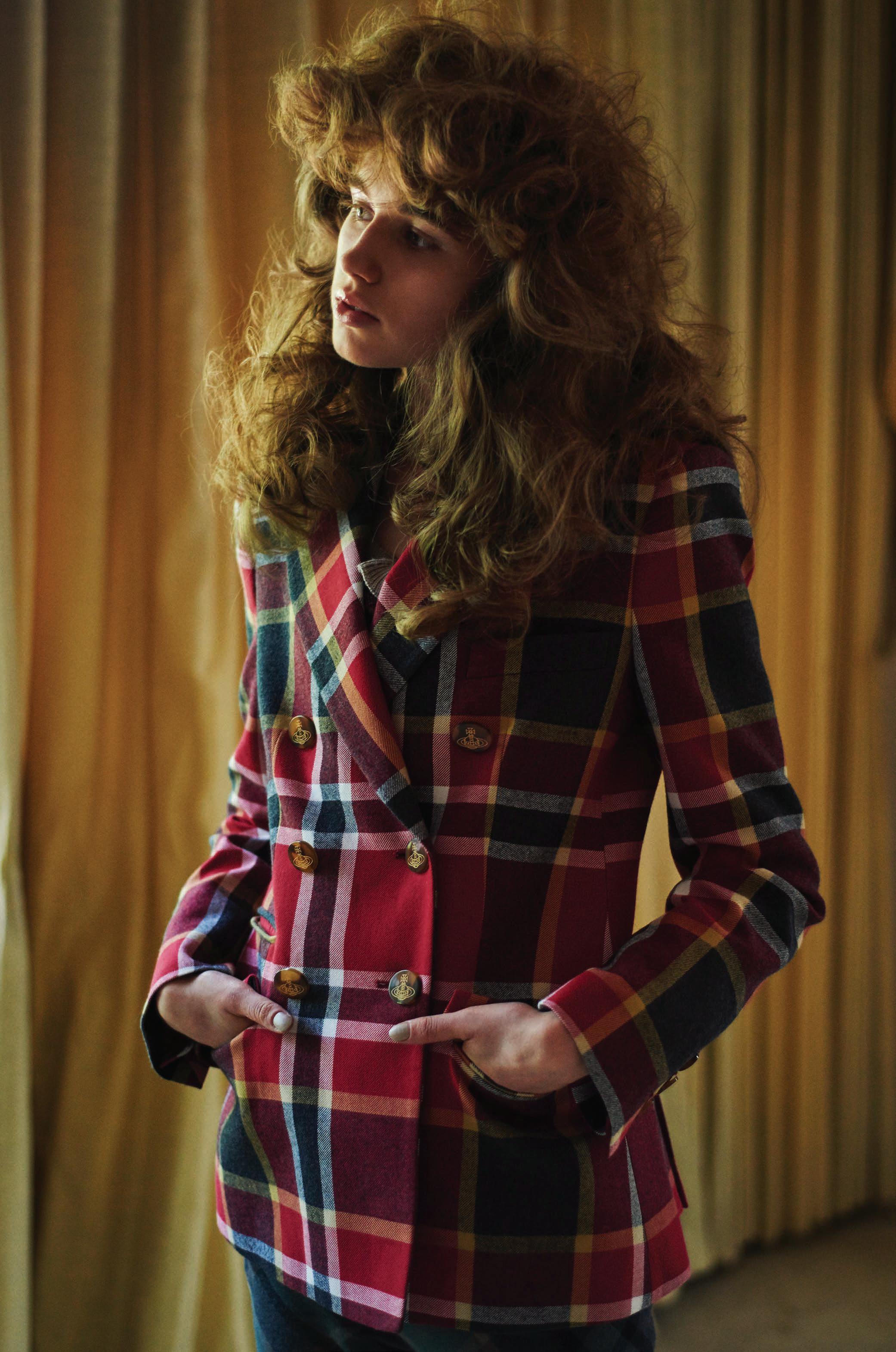


WORDS: COLIN CHAPMAN
It’s been seven years since Royal College of Art MA alumnus James Long made his catwalk debut for Autumn/ Winter 2008. Benefiting from London’s unique talent sponsorship schemes: MAN, NEWGEN and Fashion Forward, James has become integral to London’s booming menswear scene, and a fixture at London Collections: Men.
In recent collections, James has become known for his innovative take on that classic countercultural fabric: denim, first introduced for Spring/ Summer 2015 with coloured tab detailing. Each season the denim offering continues to evolve with Autumn/Winter 2015 presenting deconstructed denim jackets, fusions with shearling and jeans patched with multiple, elaborate fabrications like a run-in with a haberdasher. For Spring/ Summer 2016 jeans were hand painted and jackets patch-worked into chevron panels. The popularity of the denim pieces has shown in the sales, with many pieces selling out to become cult favourites.
With stockists around the world including: Harvey Nichols, Browns, Owen NYC, I.T. Hong Kong and Candy in Tokyo as well as other international and online stockists, it hasn’t taken long for his work to reach style-hungry celebrities such as Chris Brown, The Weekend and Pharrell Williams. Indeed, the atmosphere at a James Long show resembles a music festival with one of the most colourful front rows in London.
STREETS’ Colin Chapman caught up with the man in person to talk inspiration, tribal affiliations and learning from your friends.
There’s always a Bohemian aspect to your work, James. In our gentrified world where subcultures arguably find it harder to exist, which tribes inspire your work?
I think the most inspiring tribe is the one I surround myself with, the people I interact with, my own kind of tribe. I do have affection for an authentic Bohemian; I think my ideal getaway is a type of Bohemian dream.
You continue to work with denim, what does the fabric meant to you? Is there a limit to what you can do with it?
I love that it can get so destroyed and still look so great, I think denim is very important to my collections as it adds a reality to the overall collection. If experimentation is continued then the outcomes are limitless.

This issue is all about change and transition, what is the greatest thing experience has taught you about your fashion career?
J.L: Experience has taught me listen to yourself and others. Also, there is always a way.
You seem to establish deep personal bonds with the stylists you work with, what do stylists bring to your vision of your own work?
Luke Day, who styles my show, is a friend of mine - we have worked together for a long while. I think Luke adds a vision to my collection that is modern and relevant to fashion now. I think when you have worked together for a long while there is a language that is built up that makes the outcome look effortless.
Music is always a big feature at your shows, what role does it play in your life? What are your favourite sounds right now?
Two of my closest friends work in the music industry so we are always at some kind of festival or gig. I love music and its emotive qualities. The music for the show is a great challenge - to find a sound that really explains your message.
I really like The Horrors cover of Frankie Knuckles’ Your Love
Which techniques or individual pieces in your AW15 collection are you most proud of?
I really liked the leather jackets and the sheepskin and denim jacket. I really enjoyed working with James Davidson on the prints as well. I like it all, as each piece is part of the story.
I’m aware of your close friendships with other designers, what do such friendships teach you about your own work?
I always admire my friends’ work and am interested in their success; if you are original there is enough room for everyone to create.
